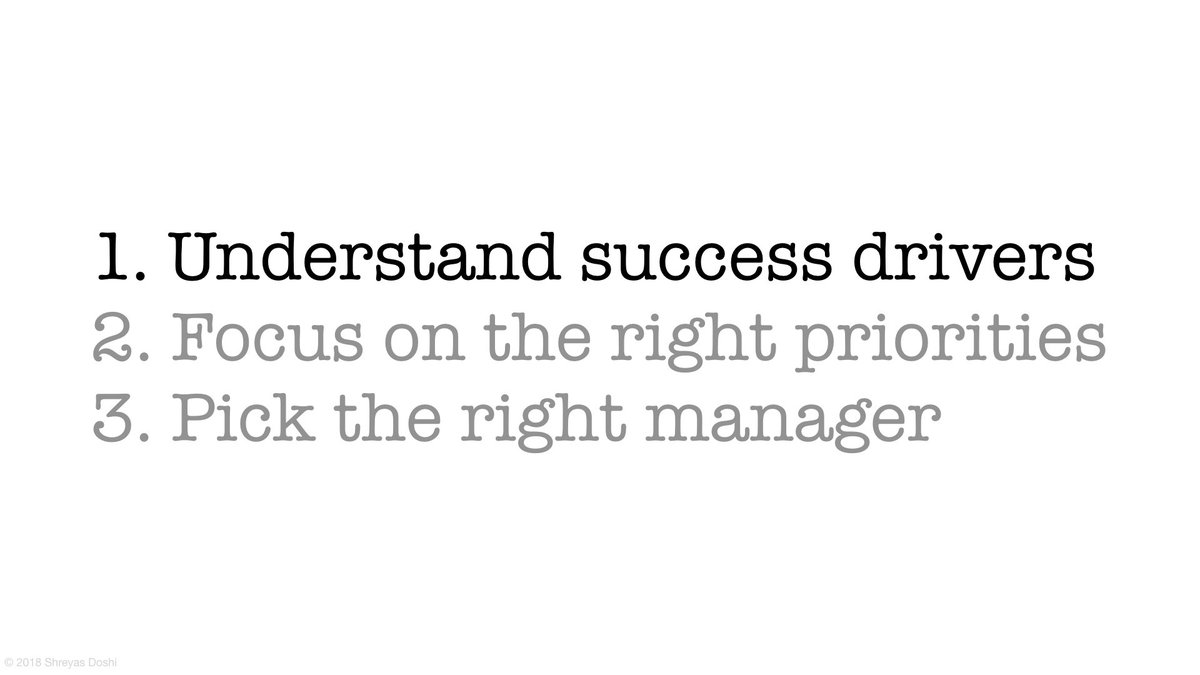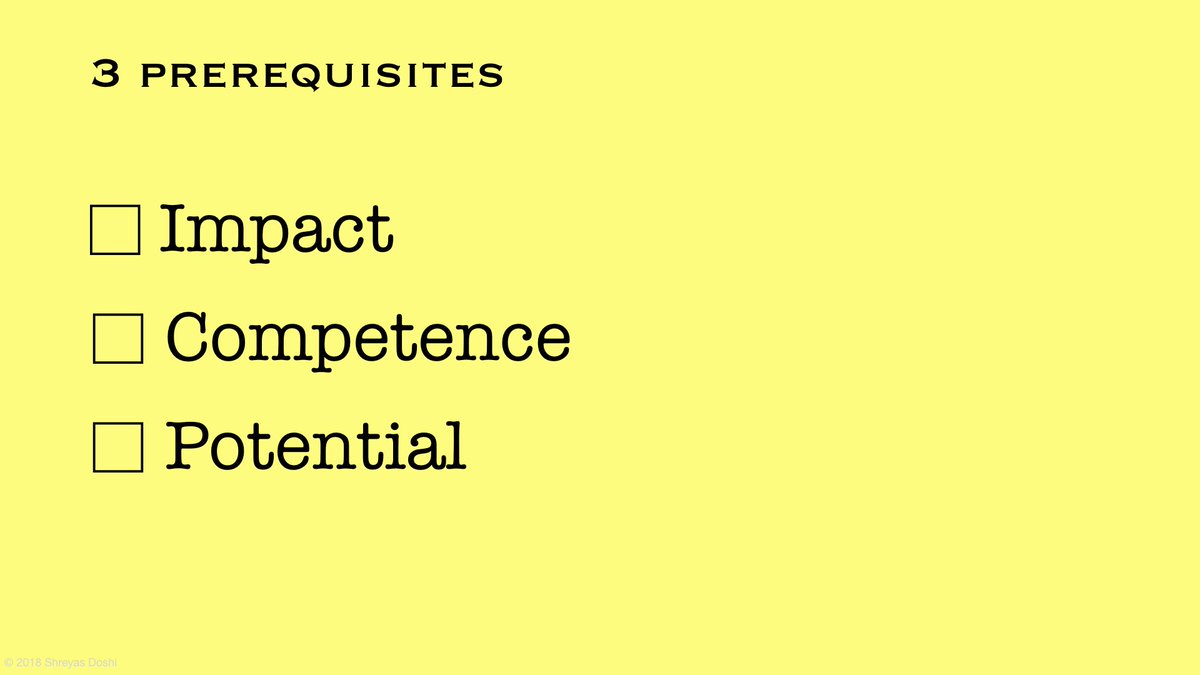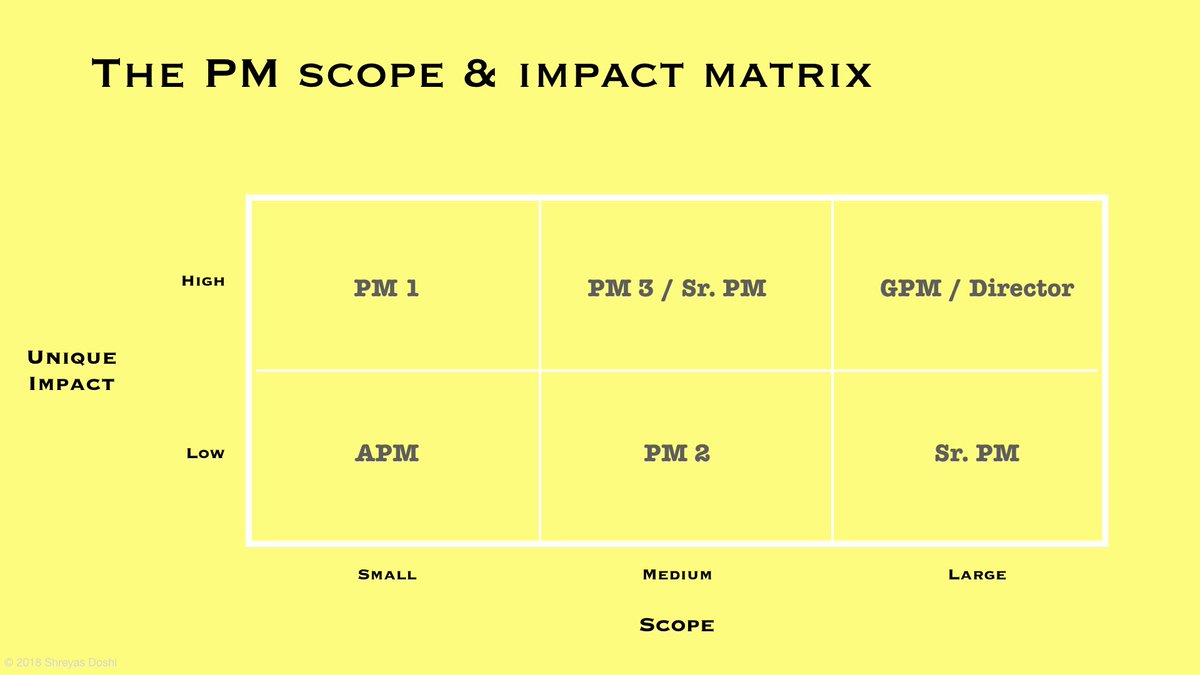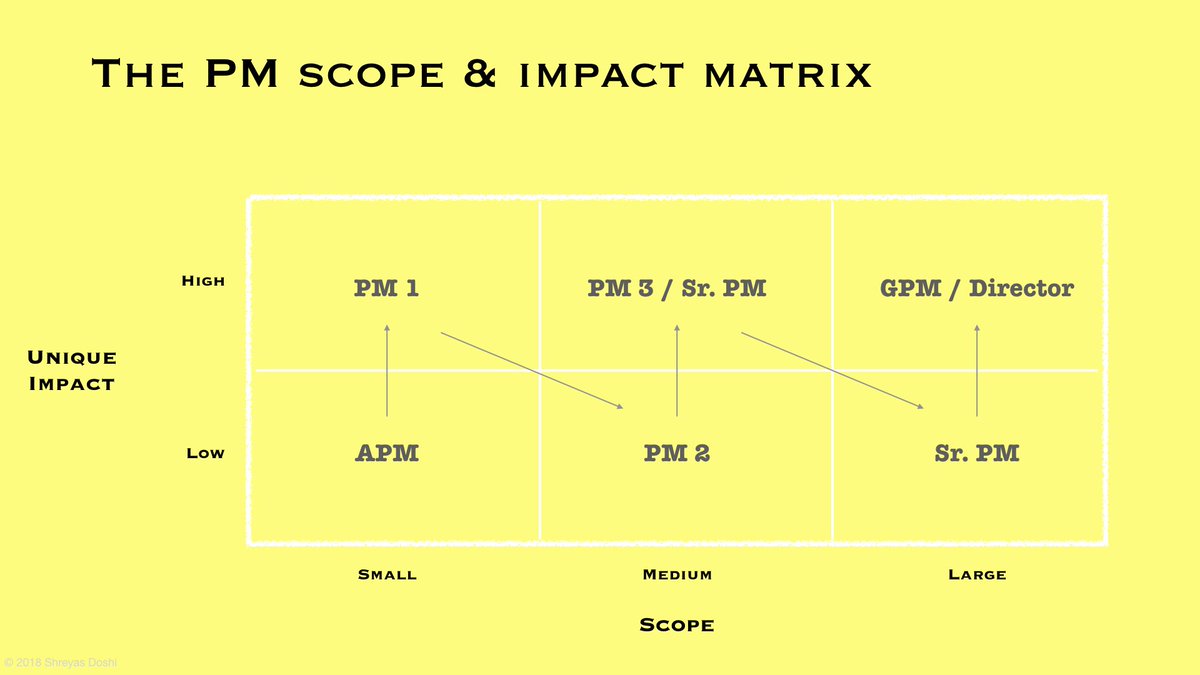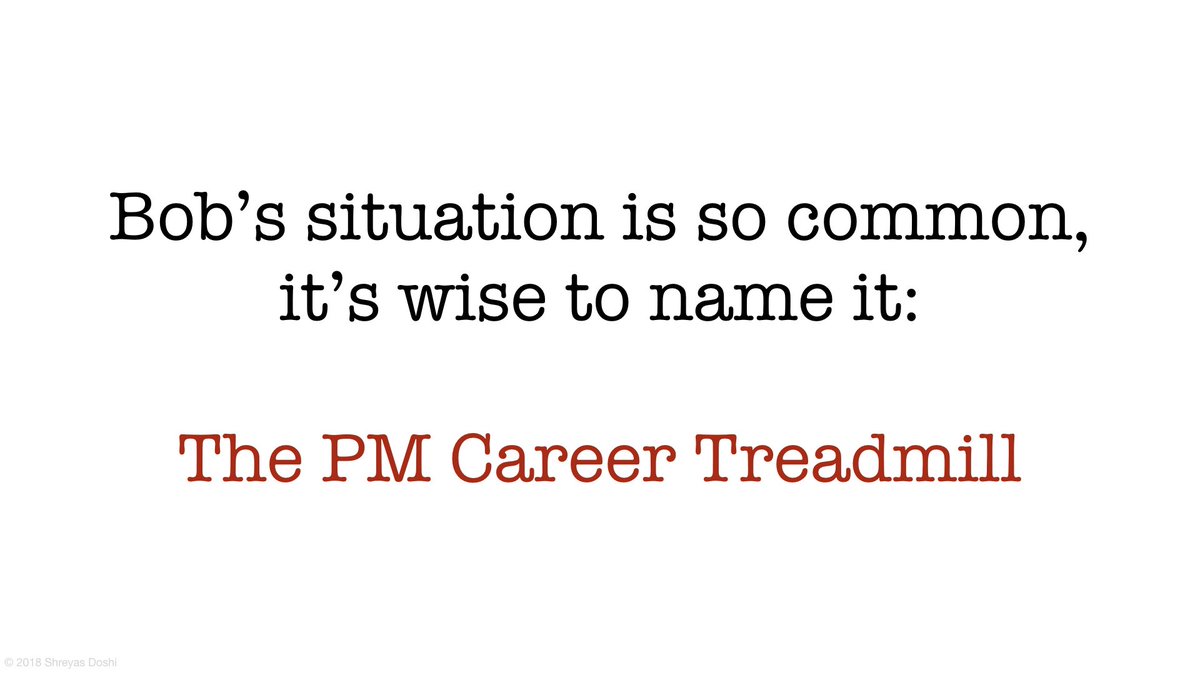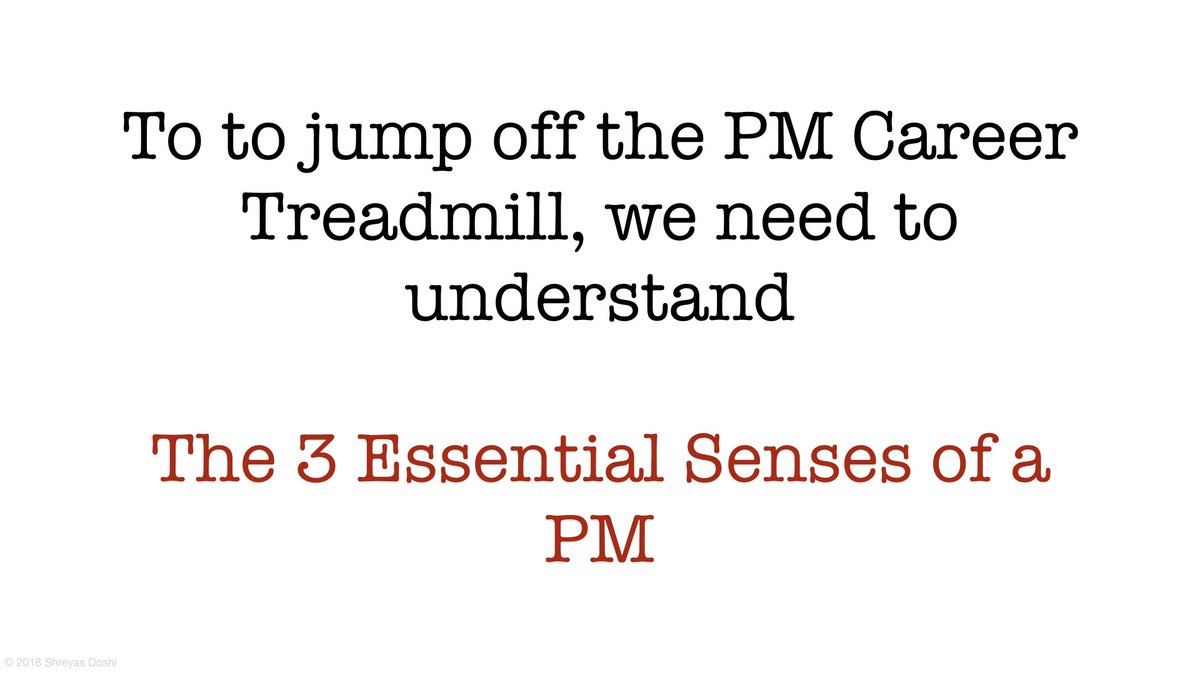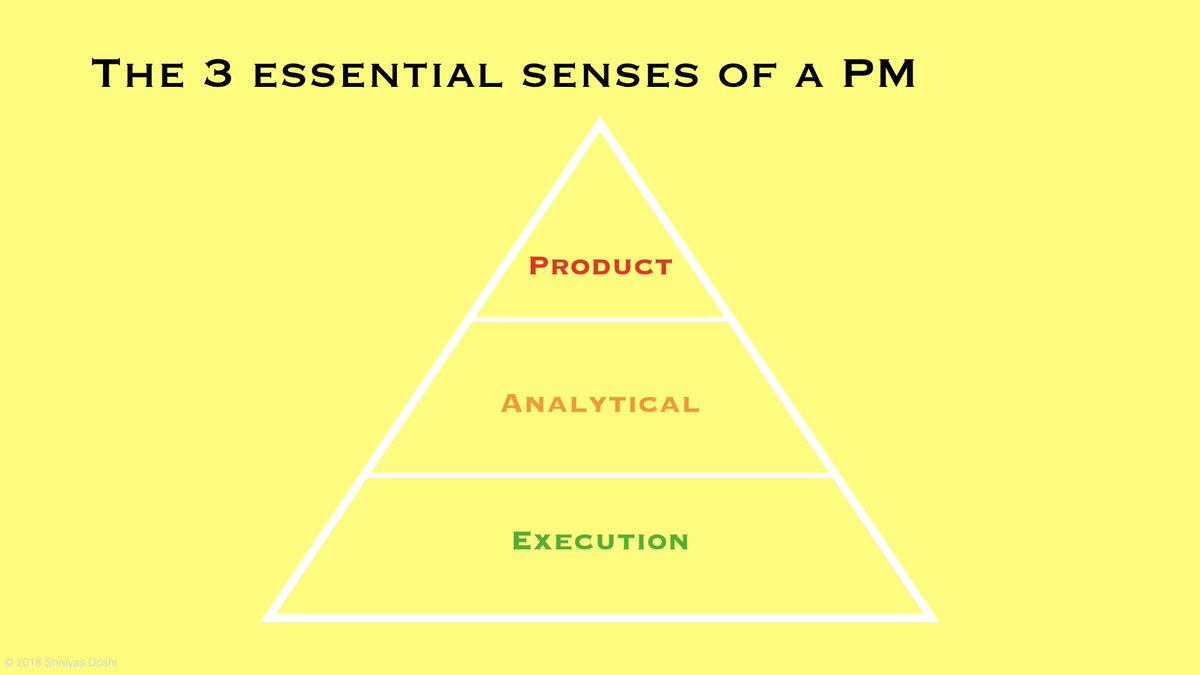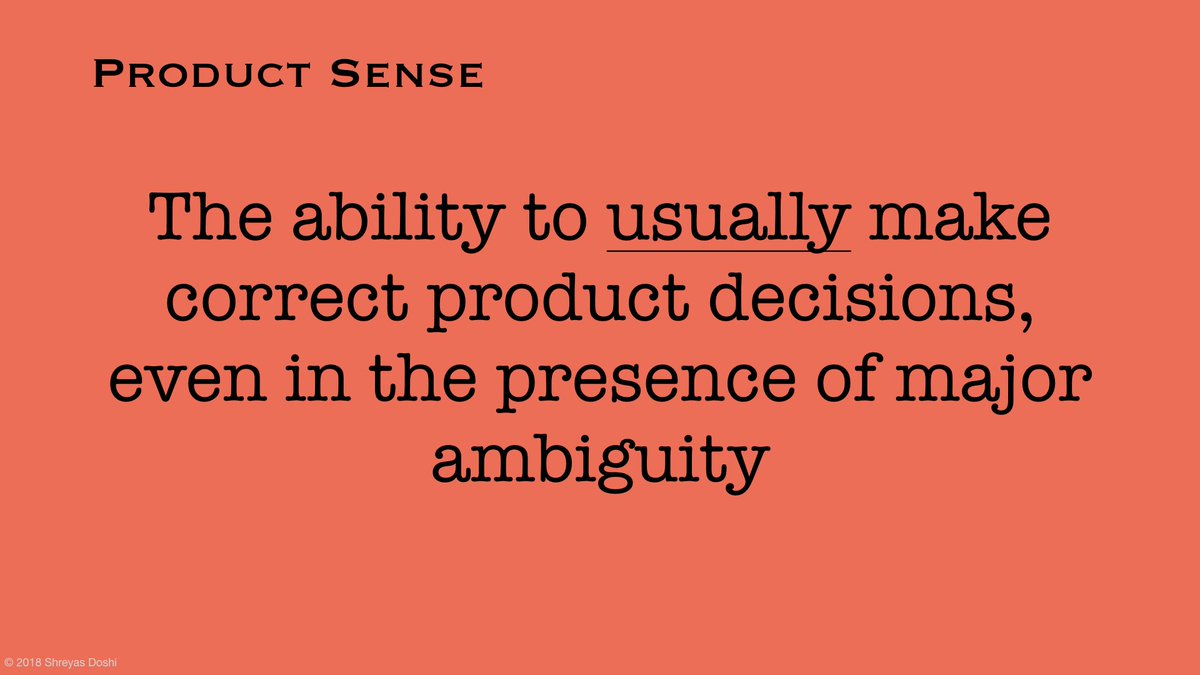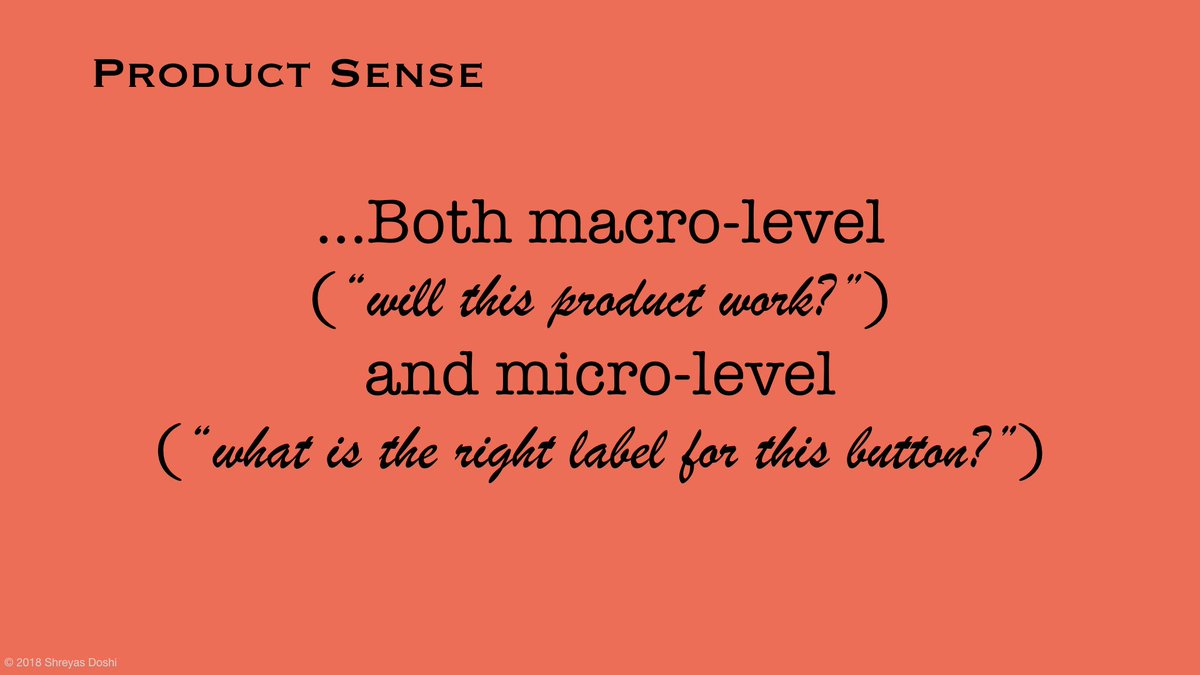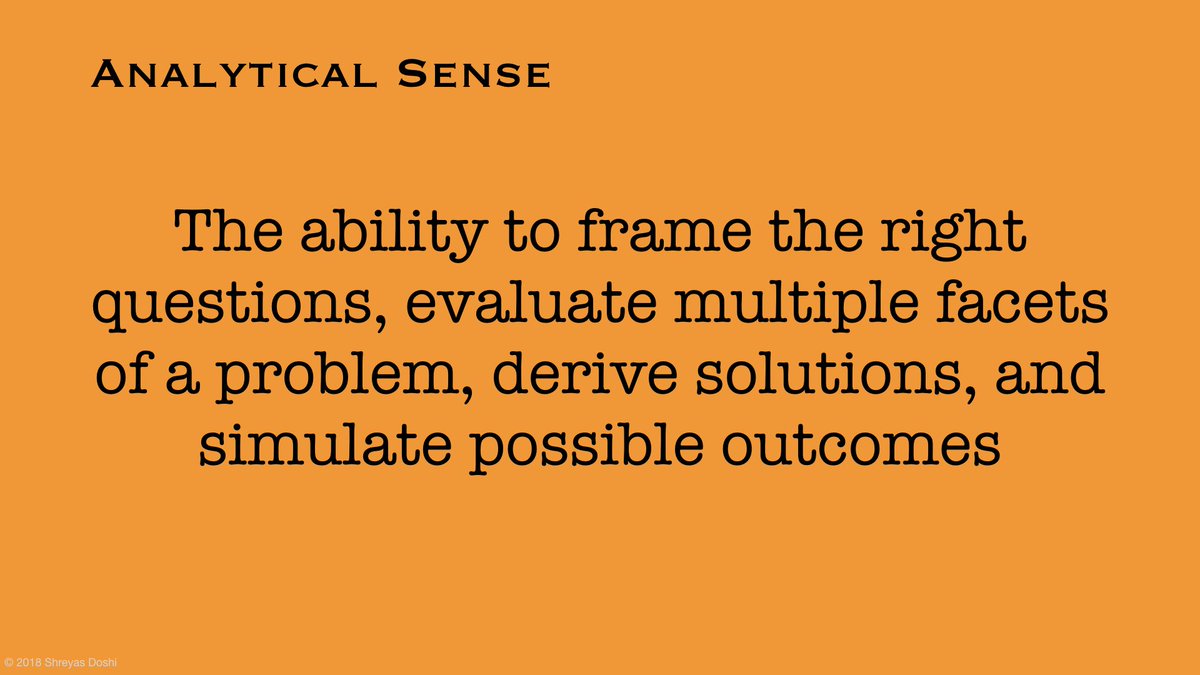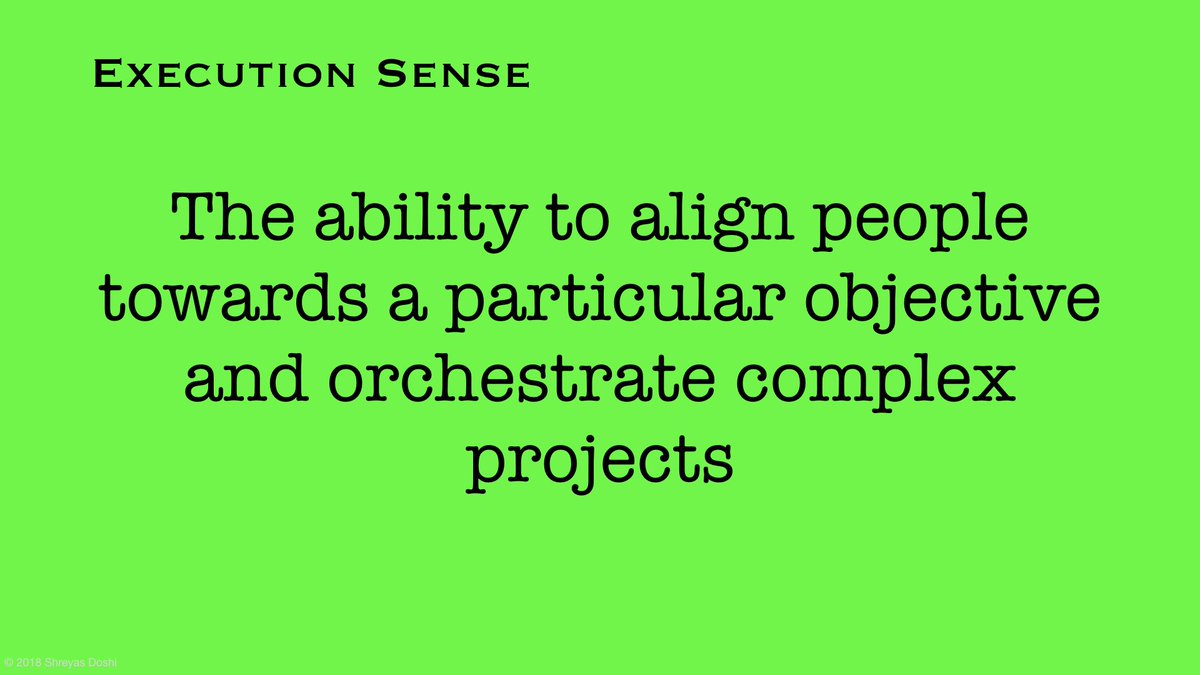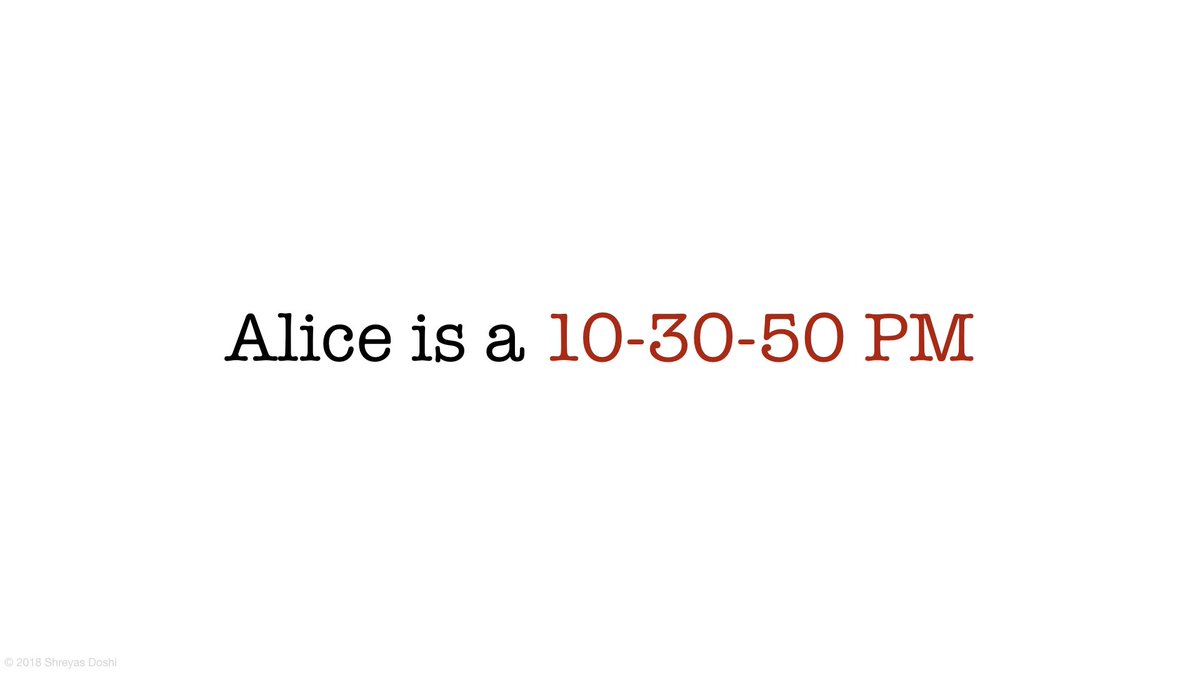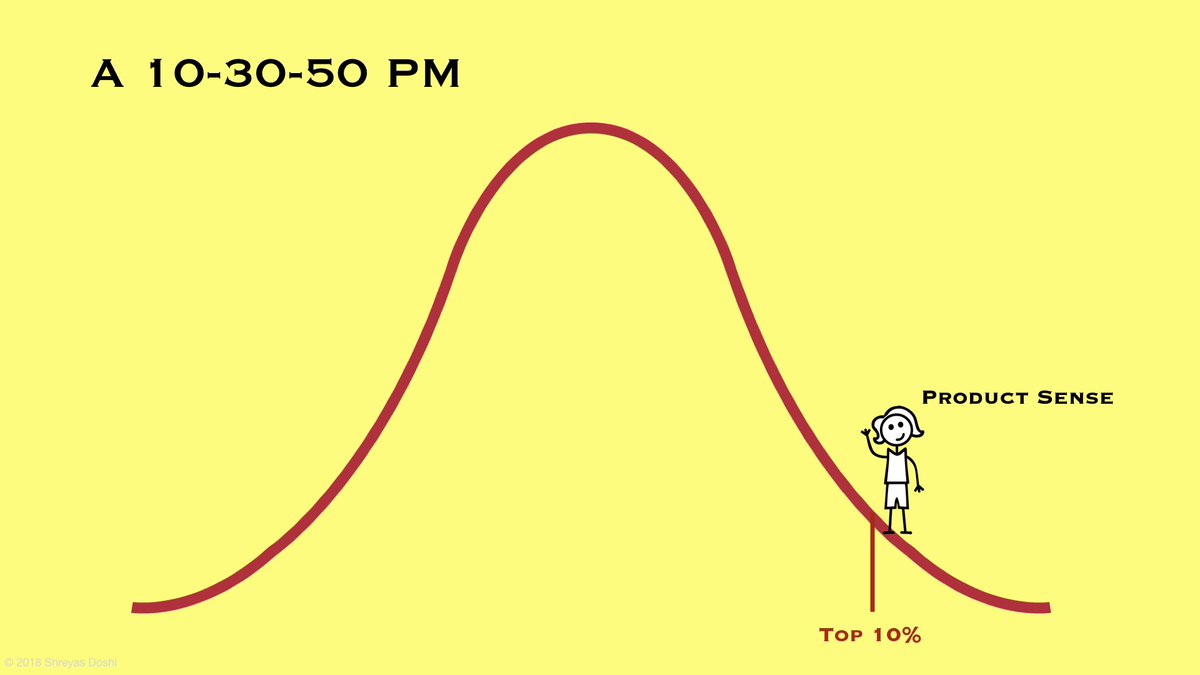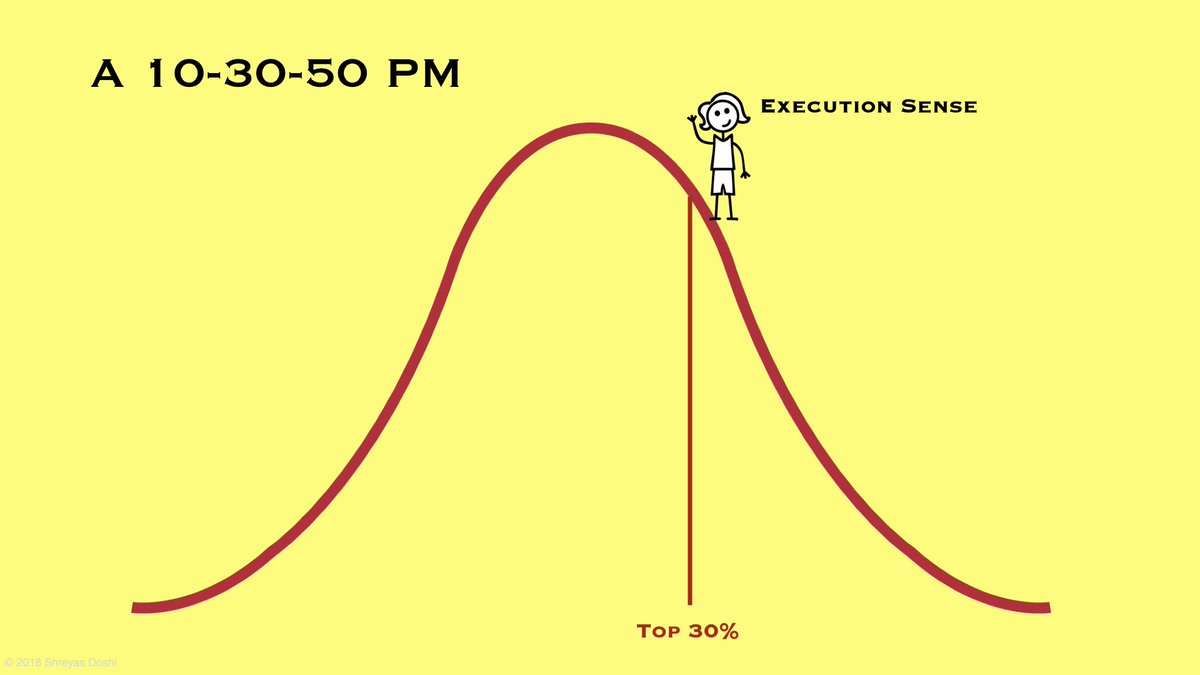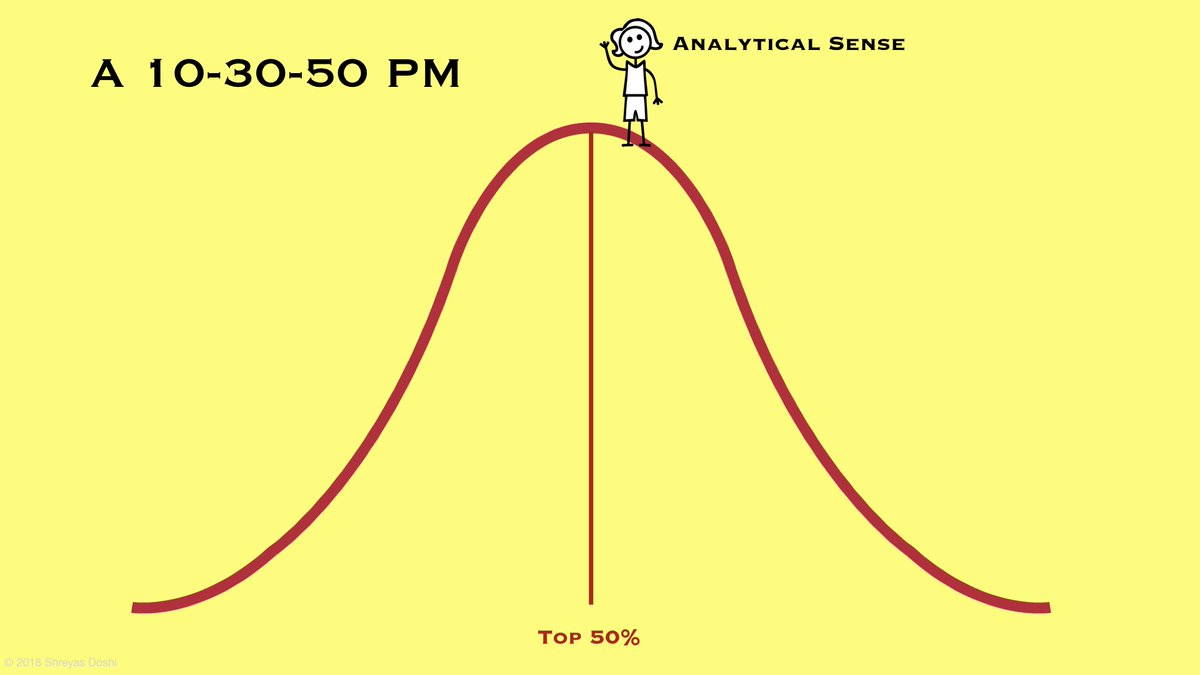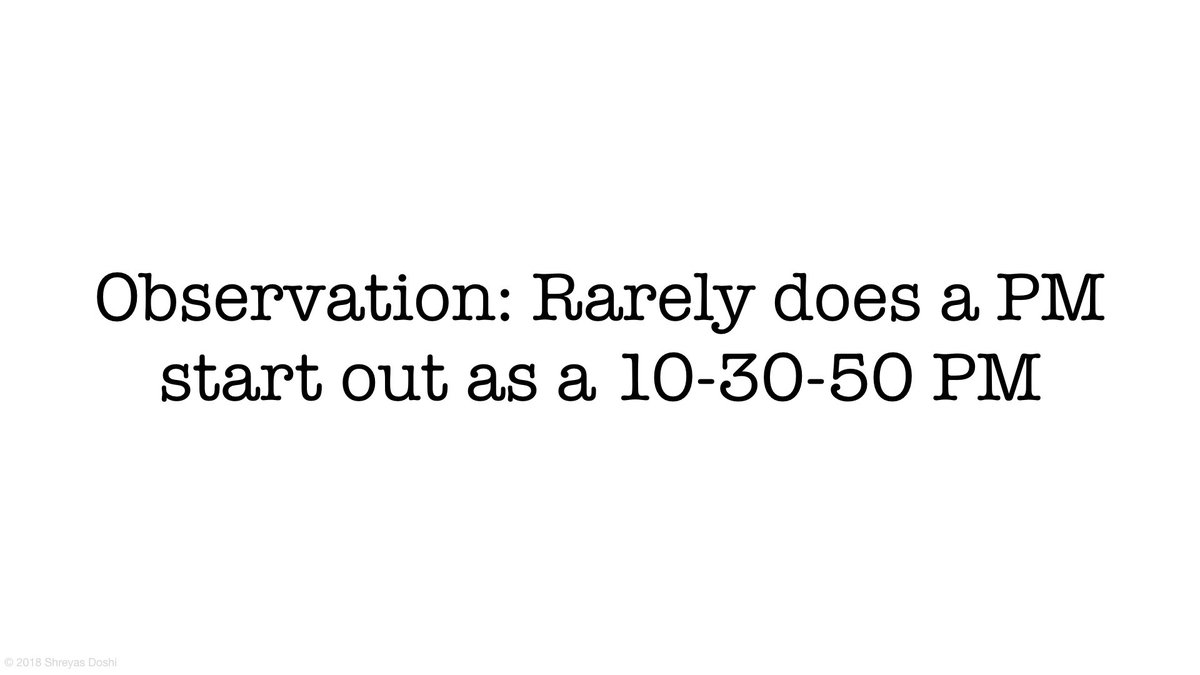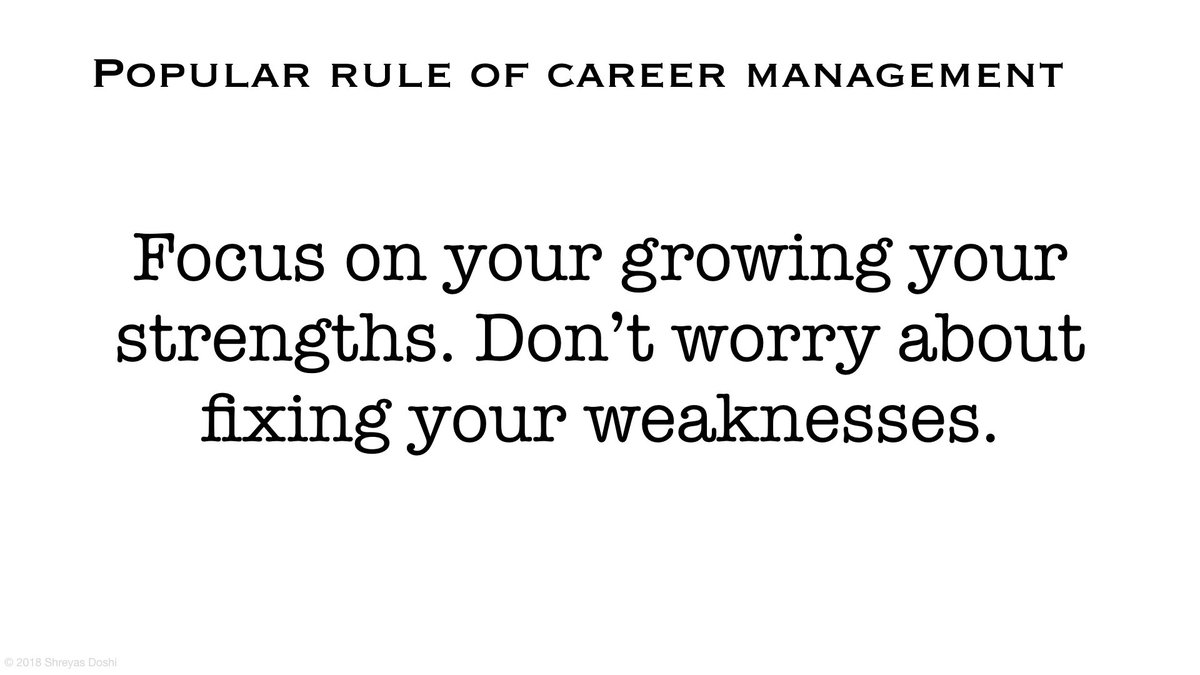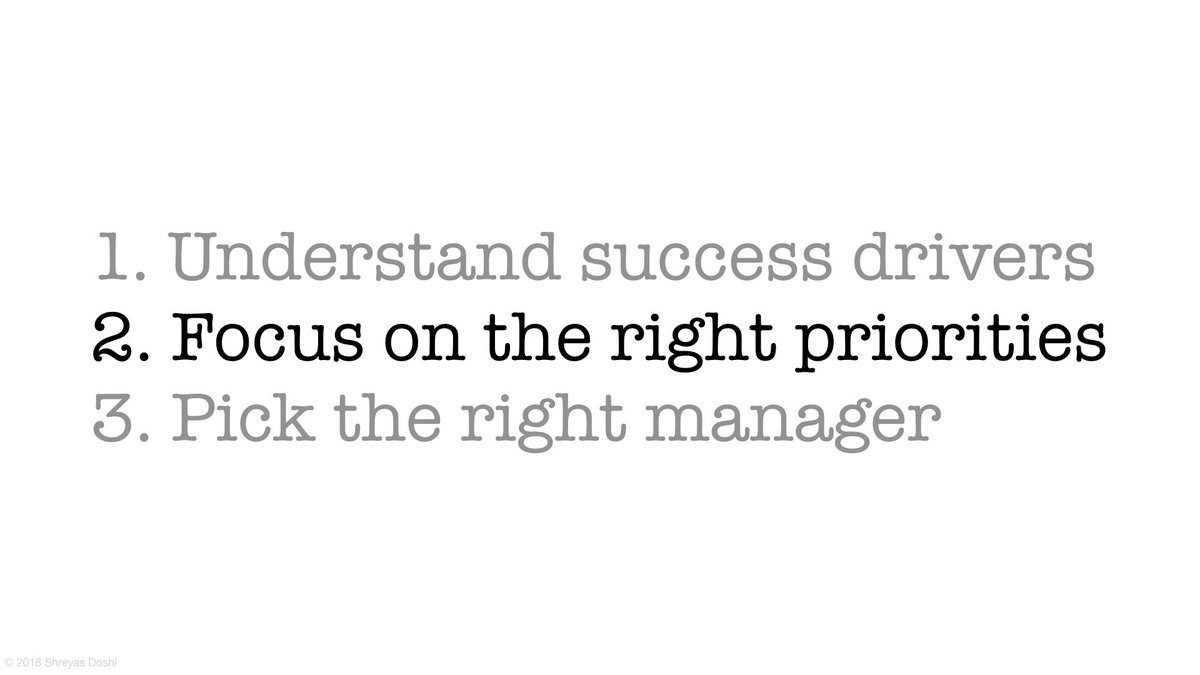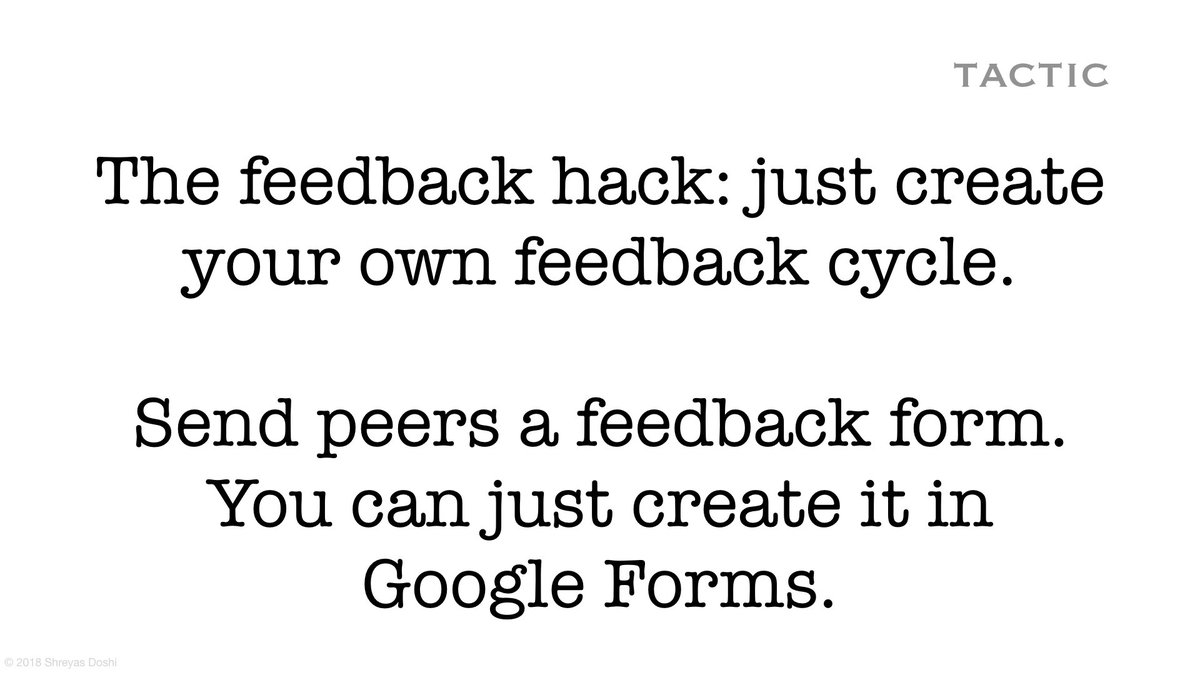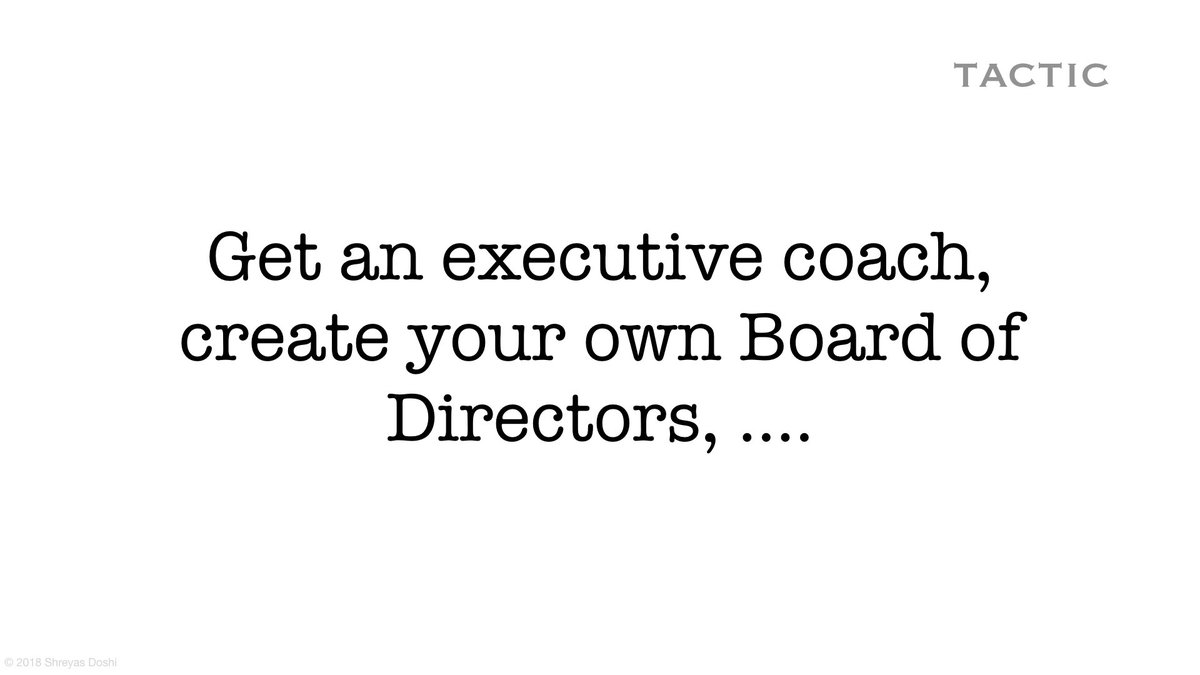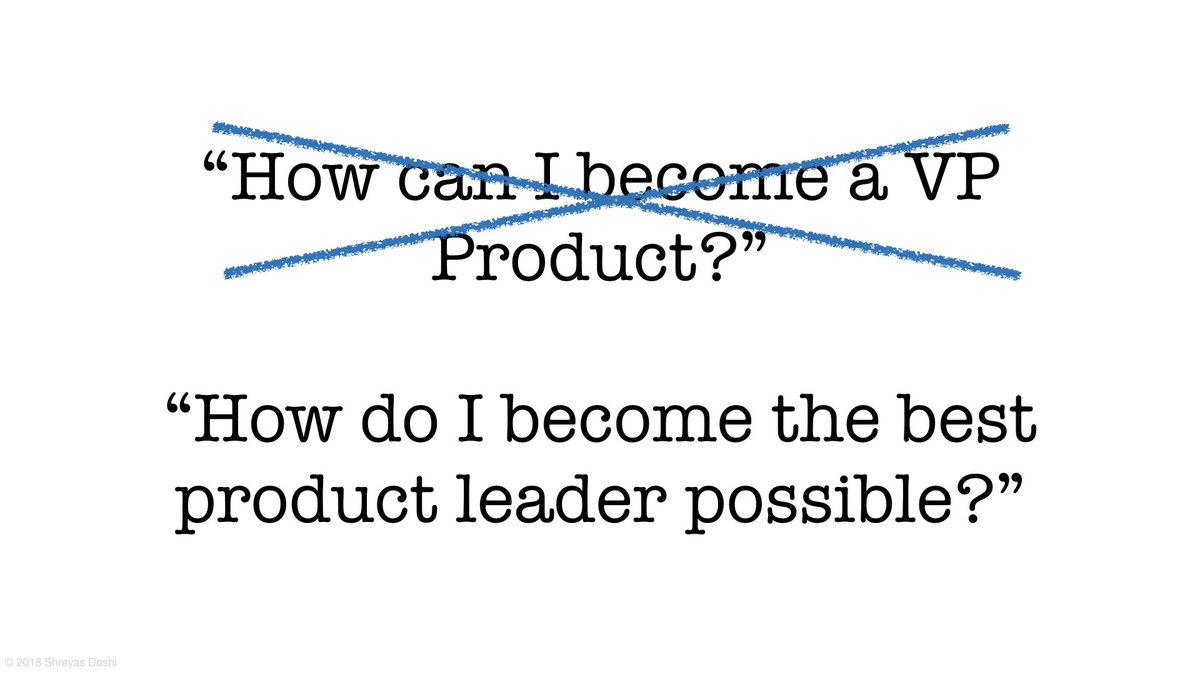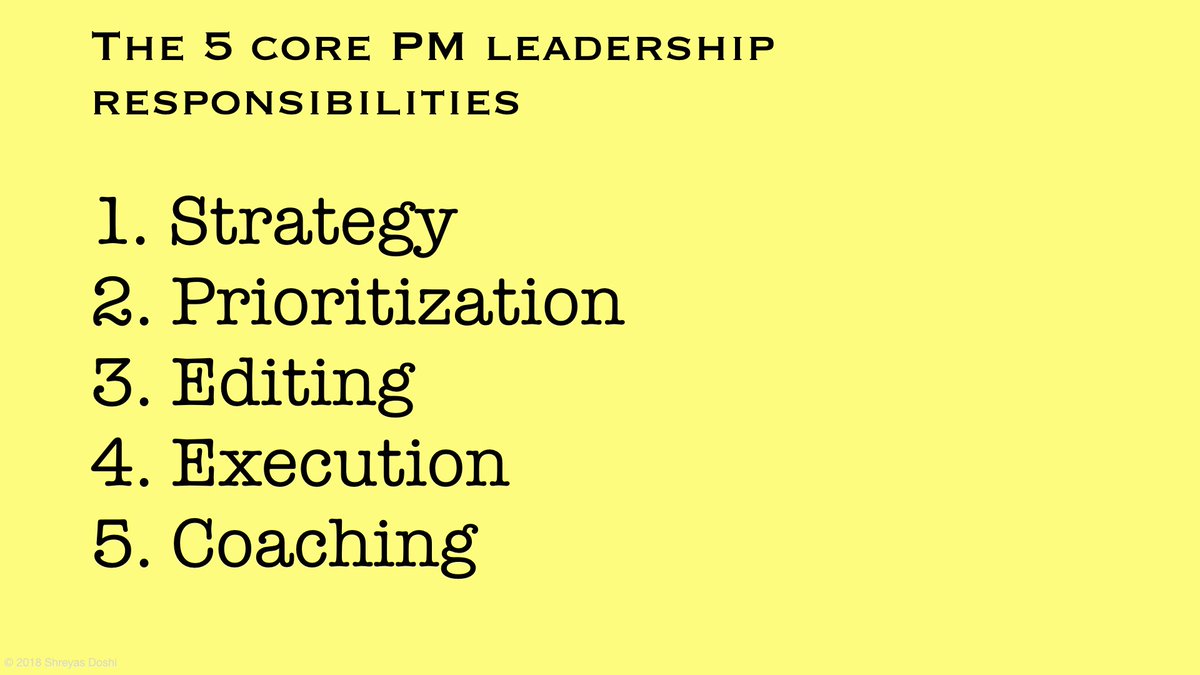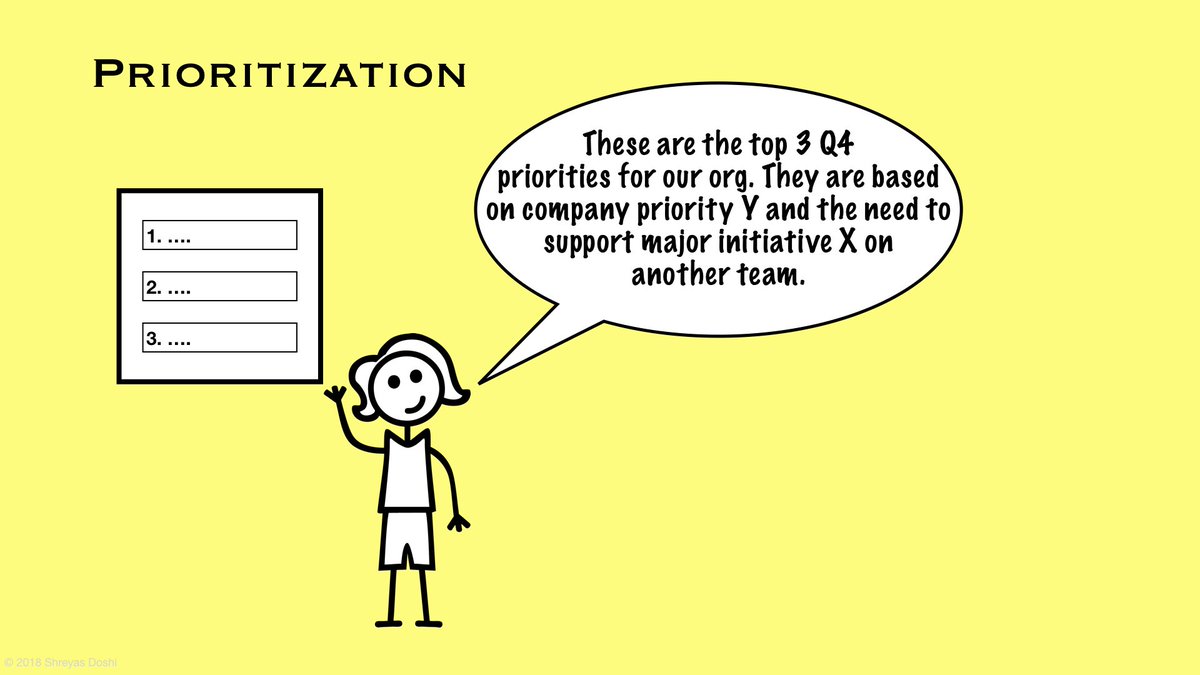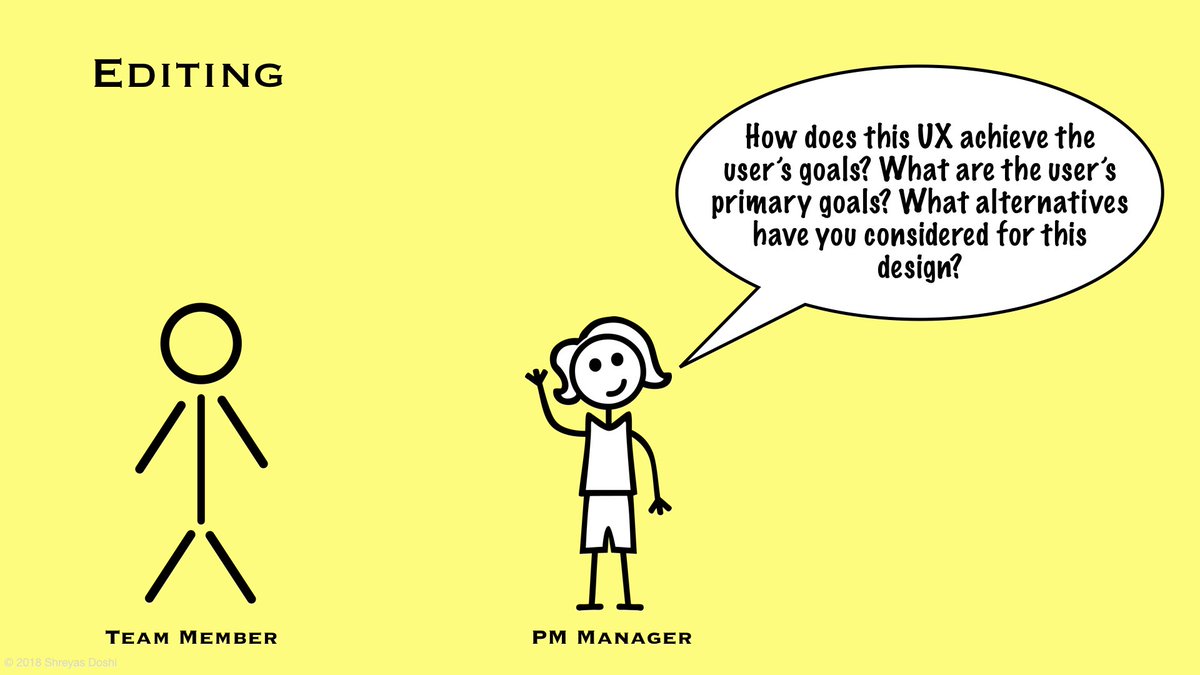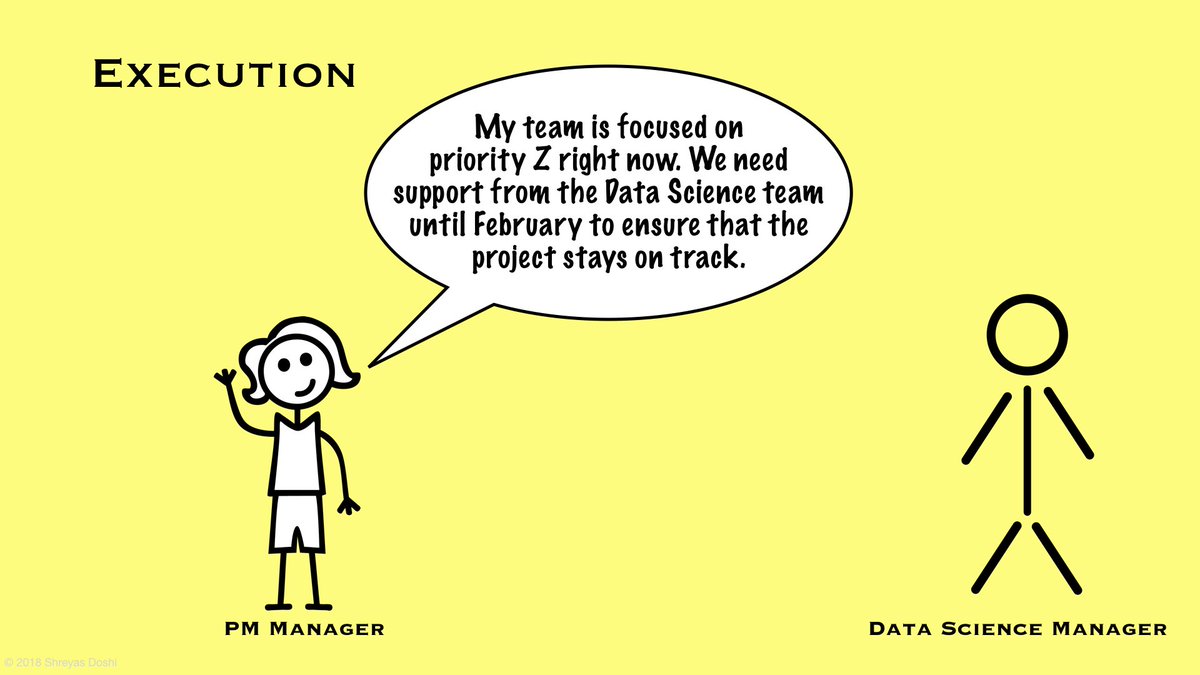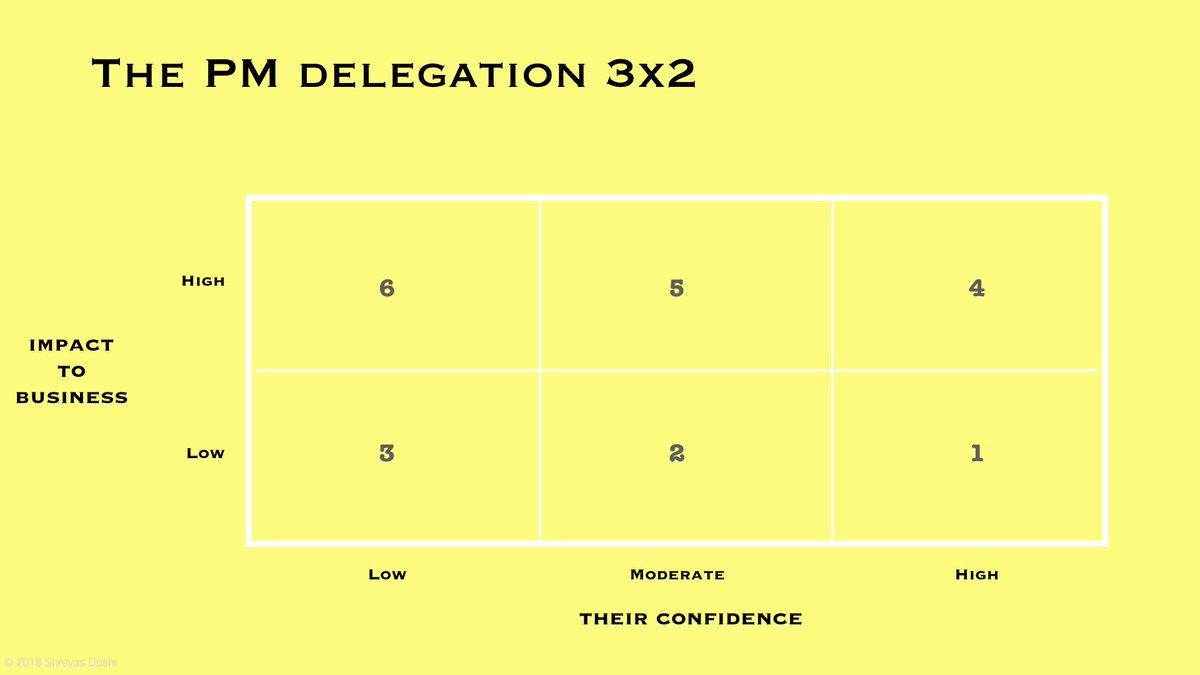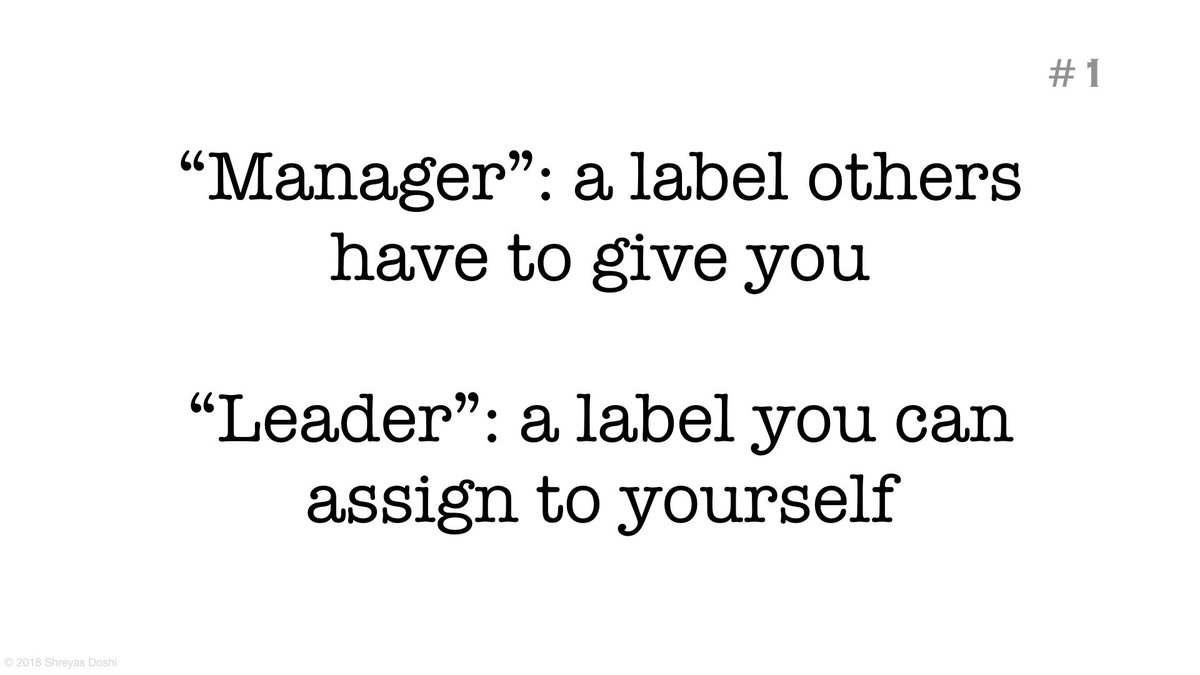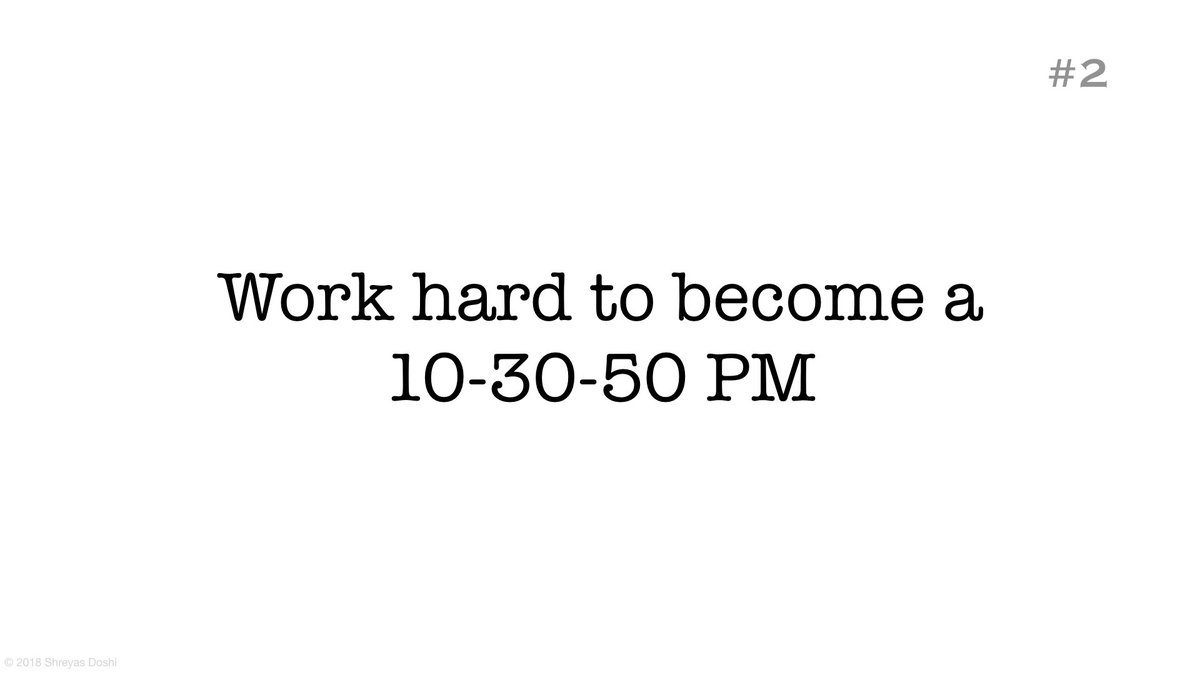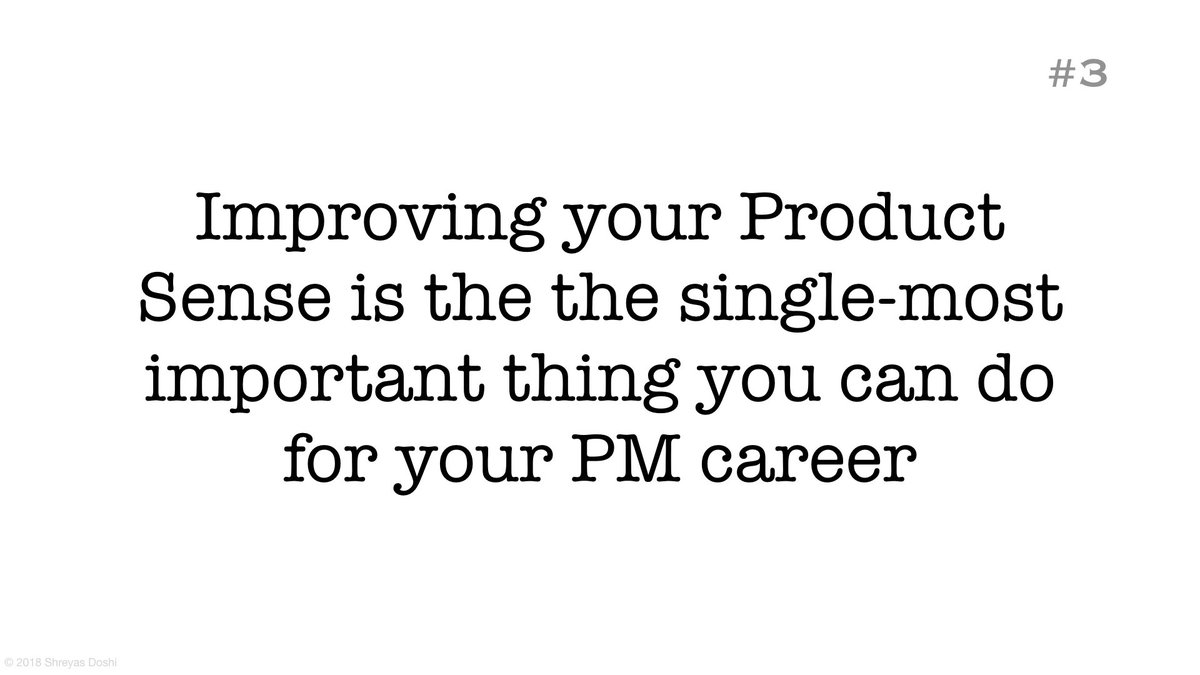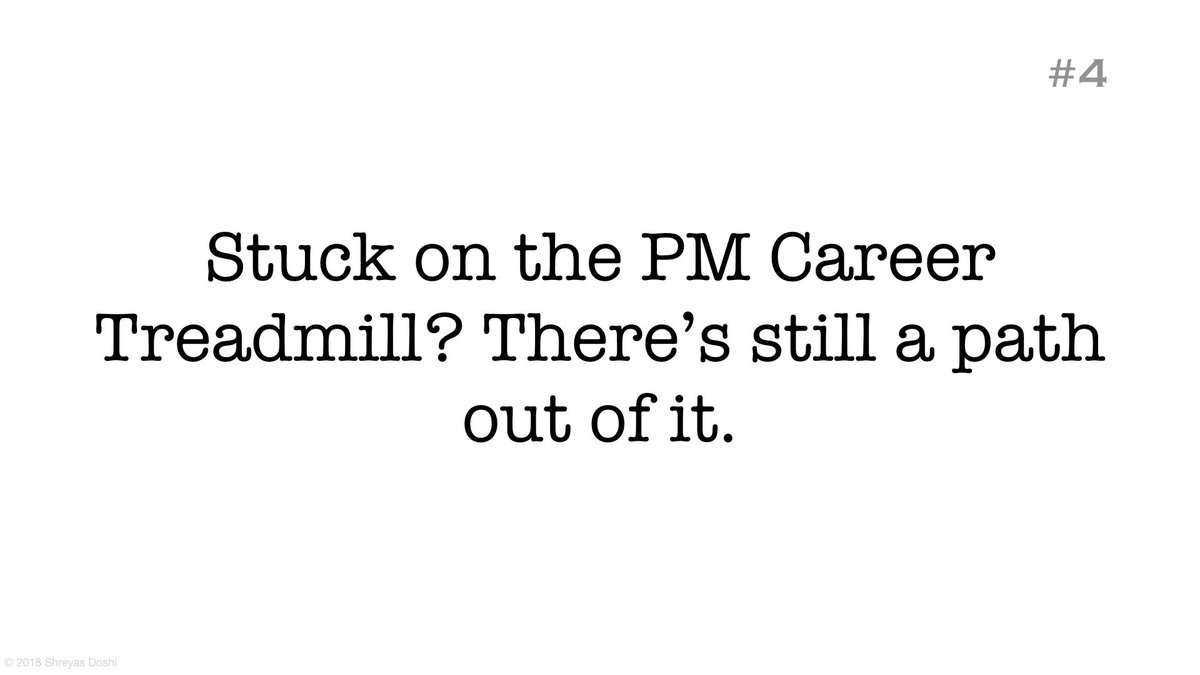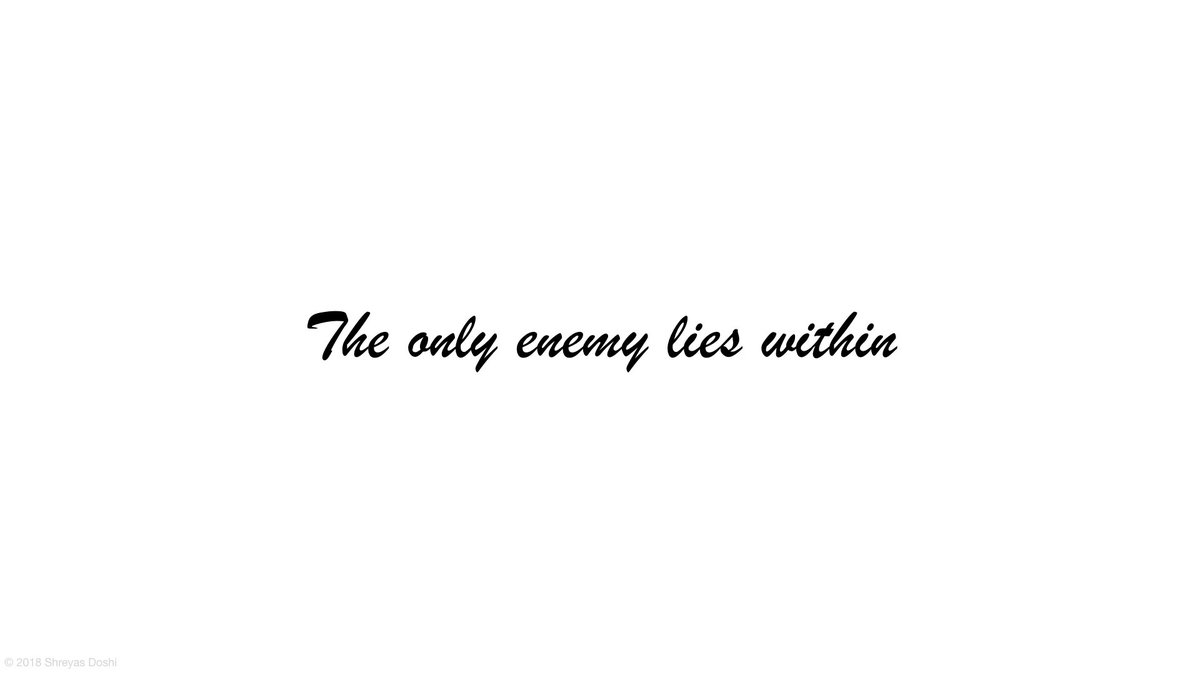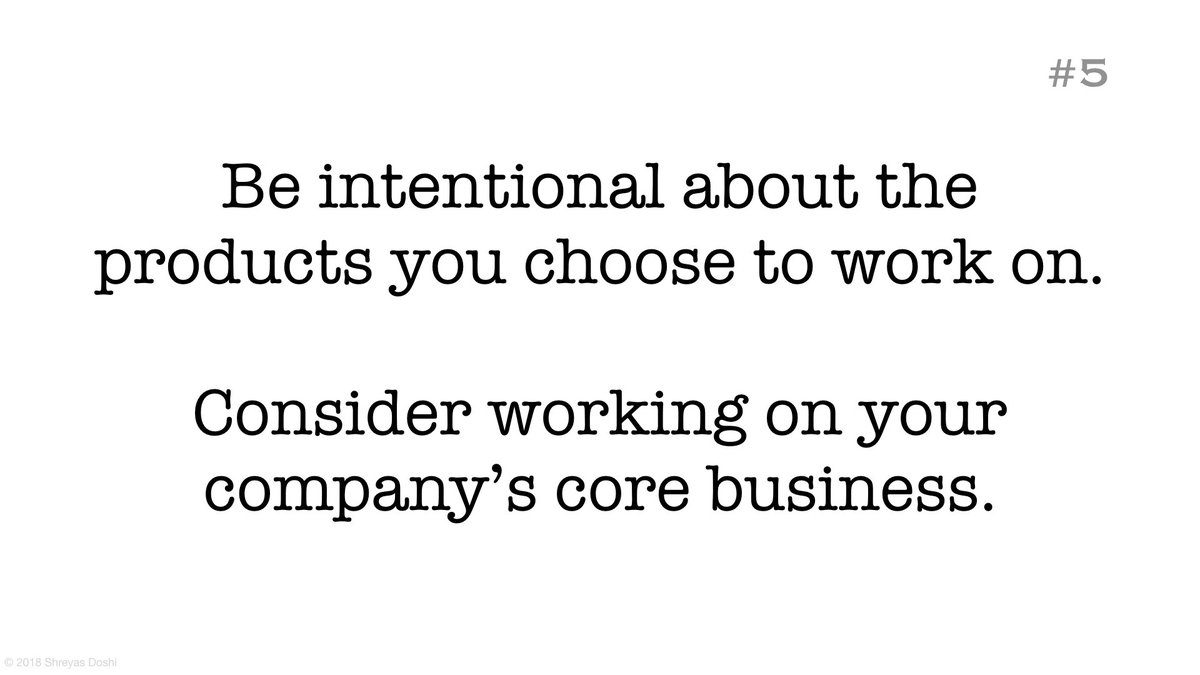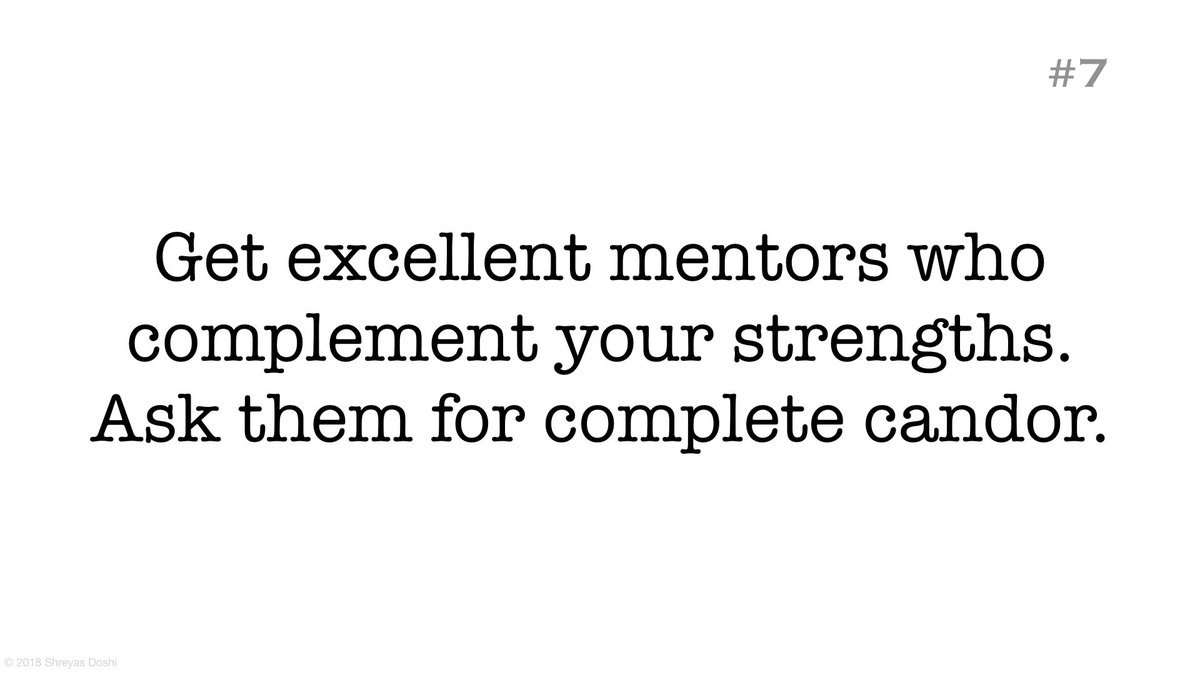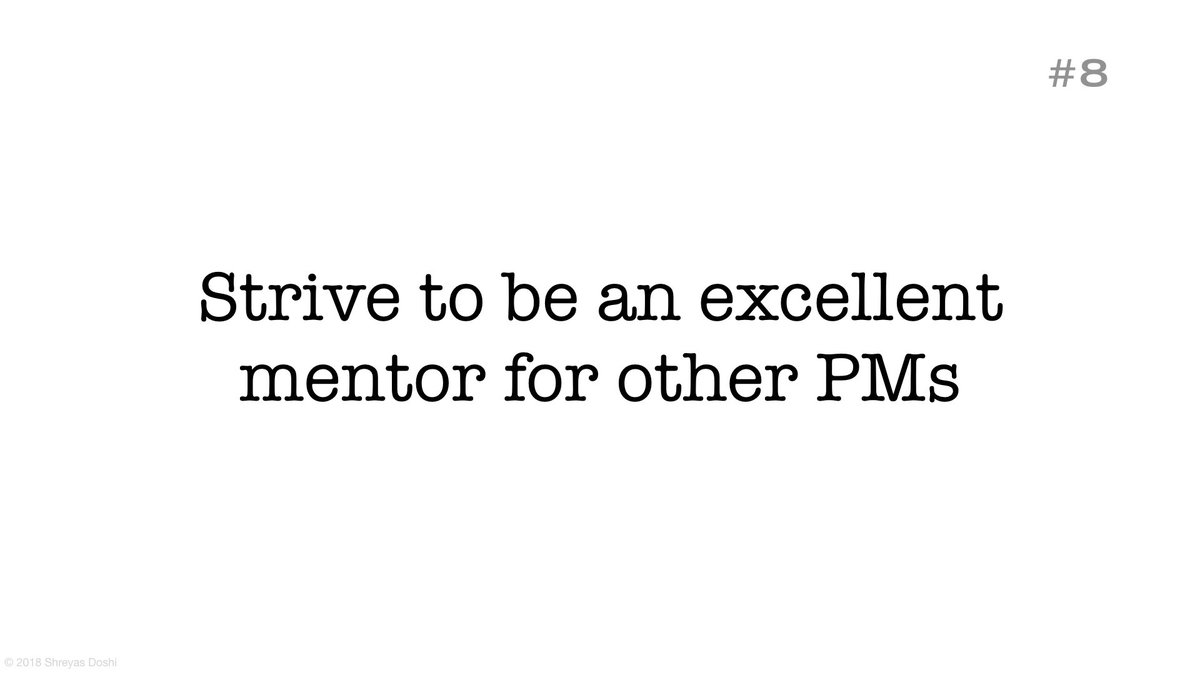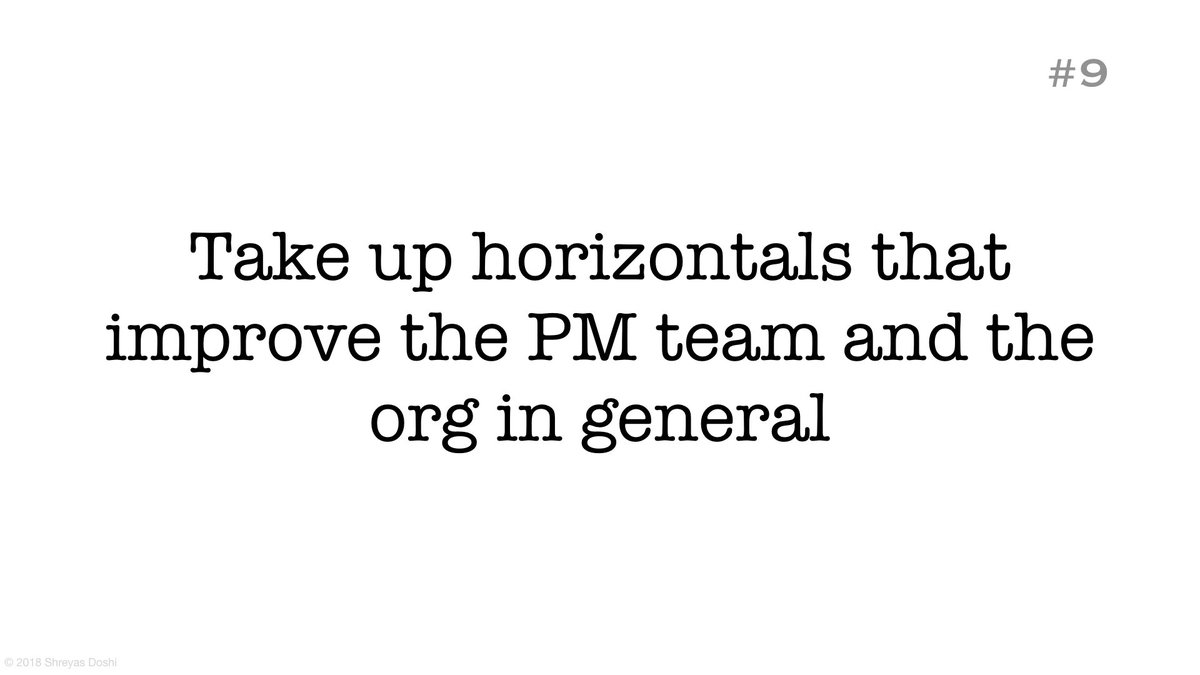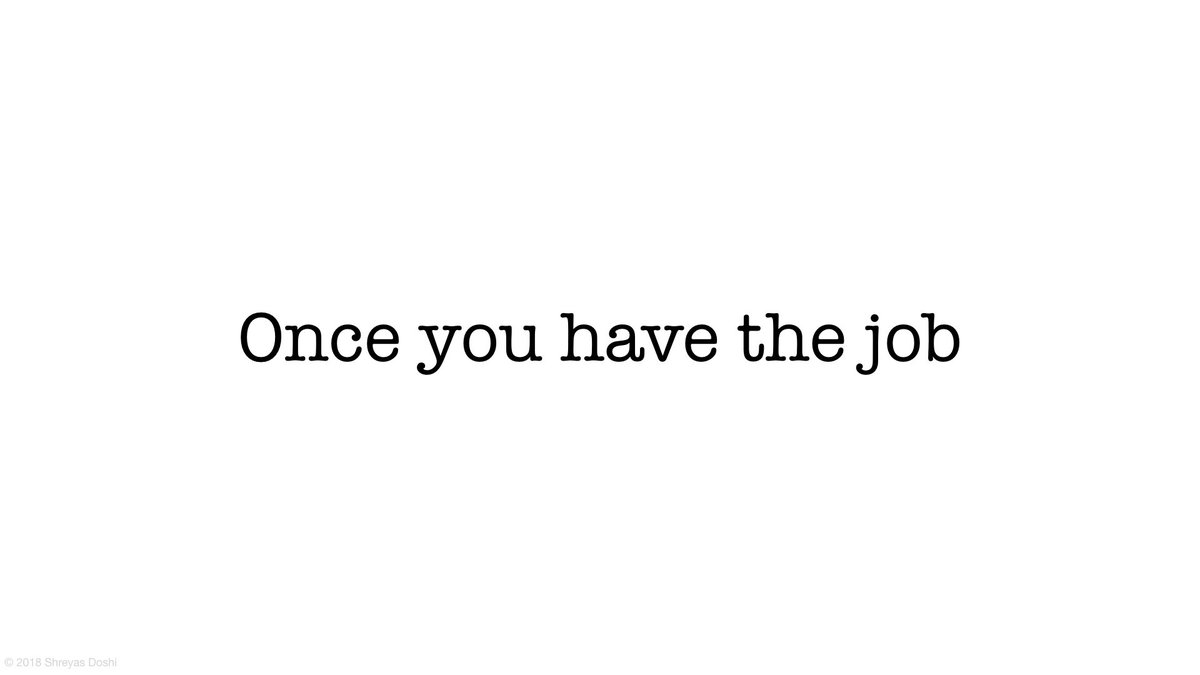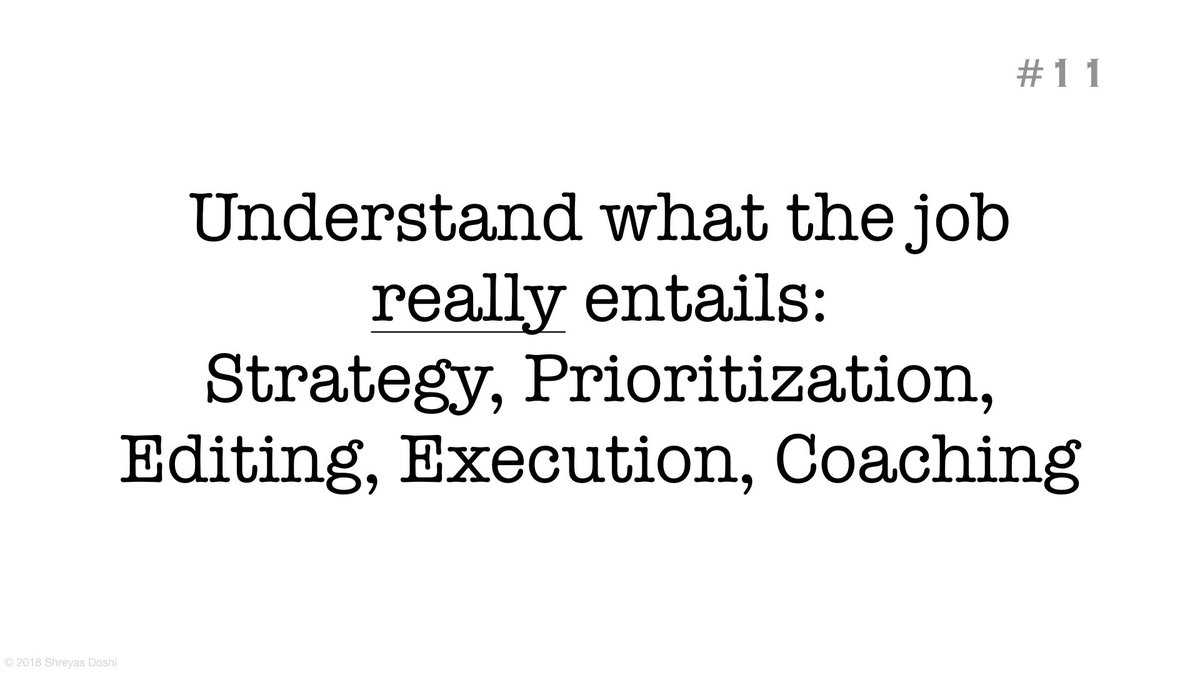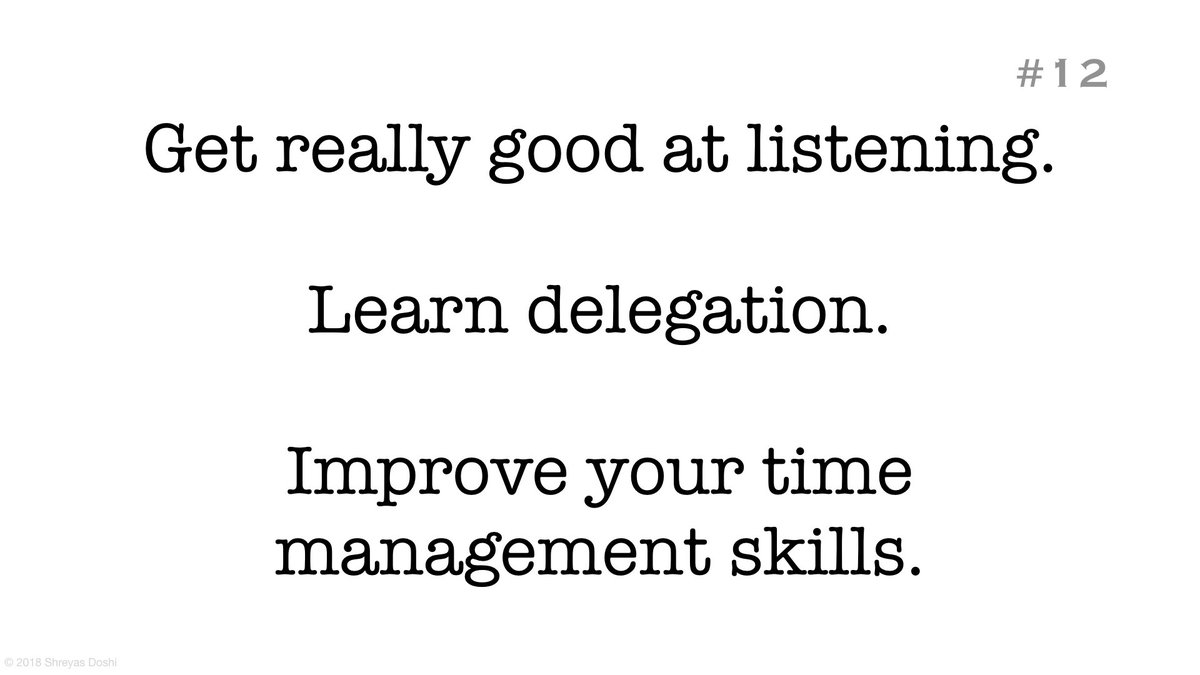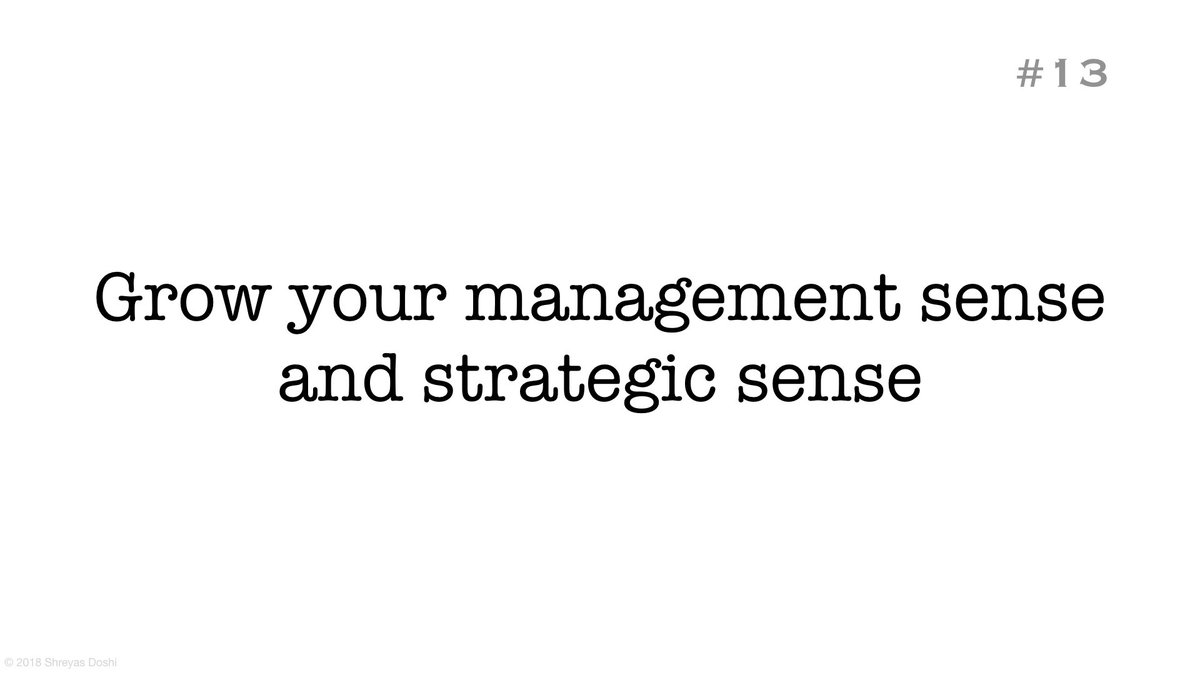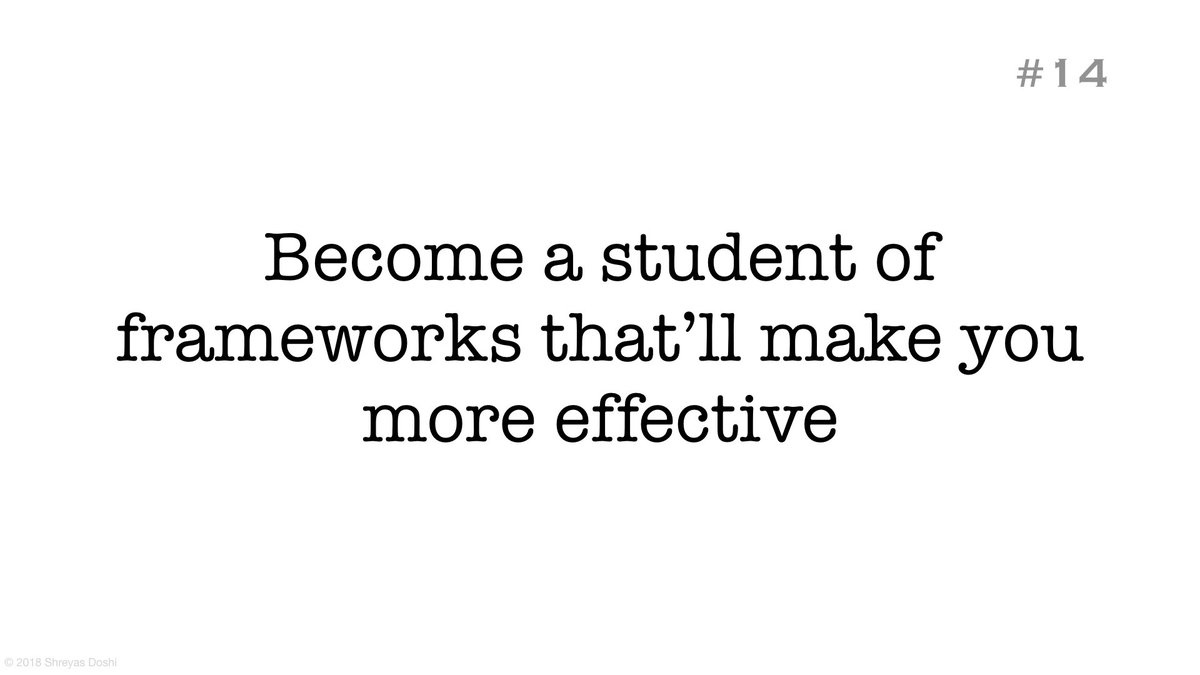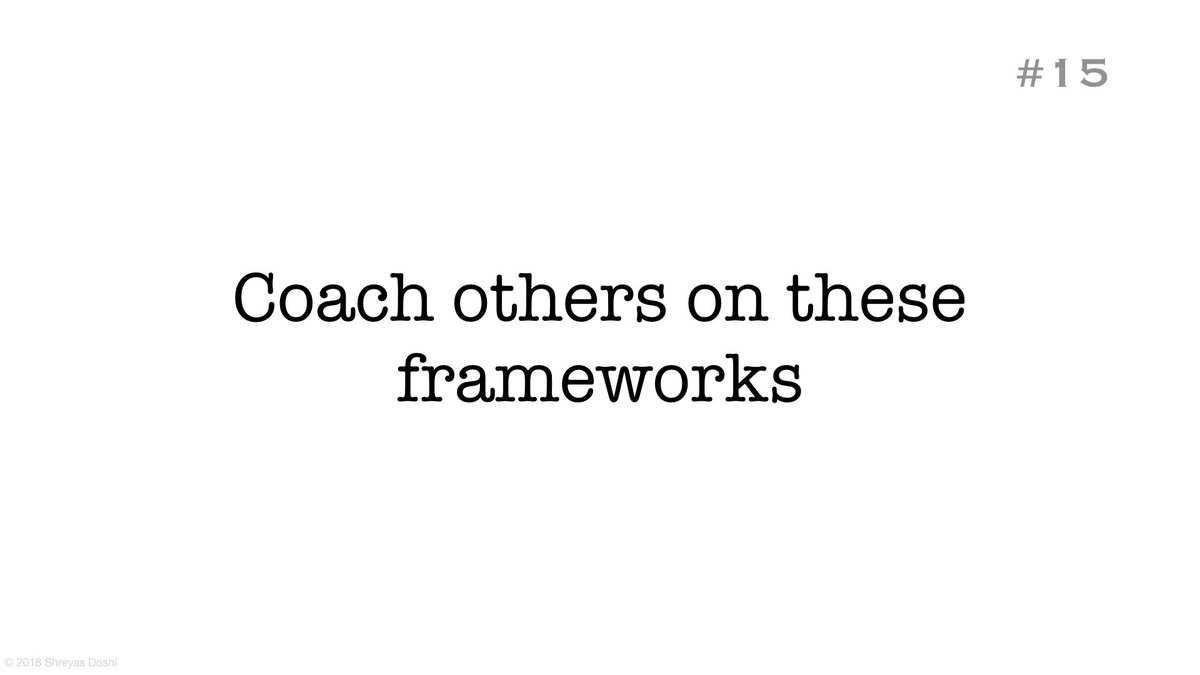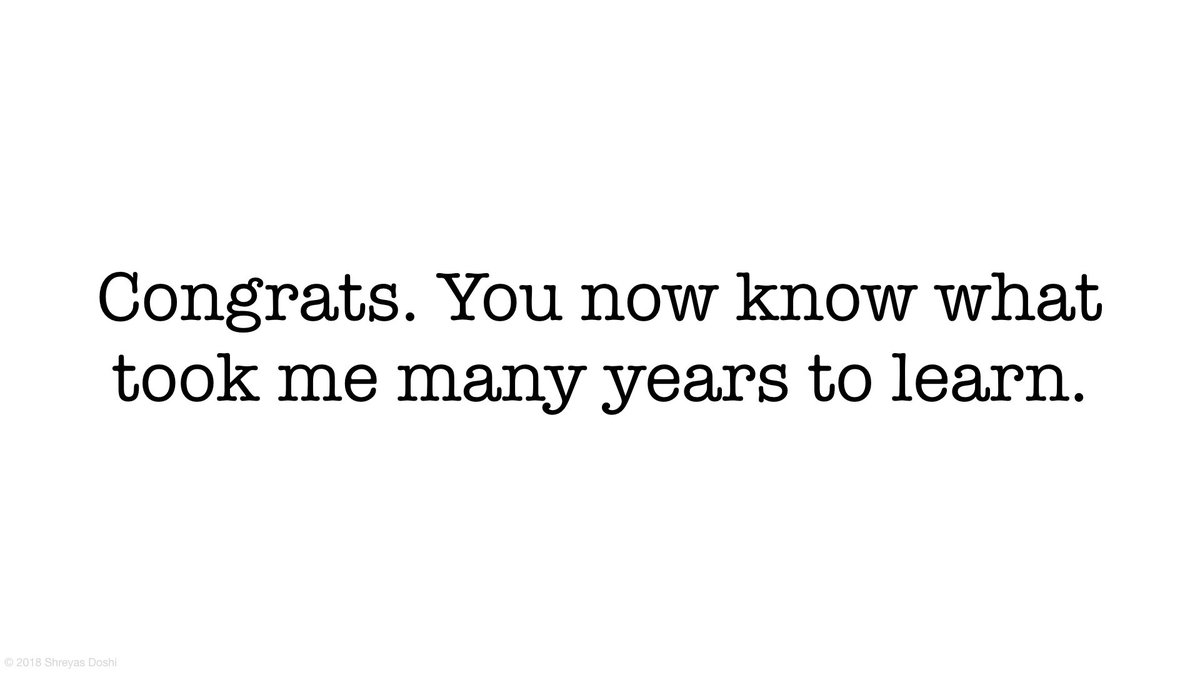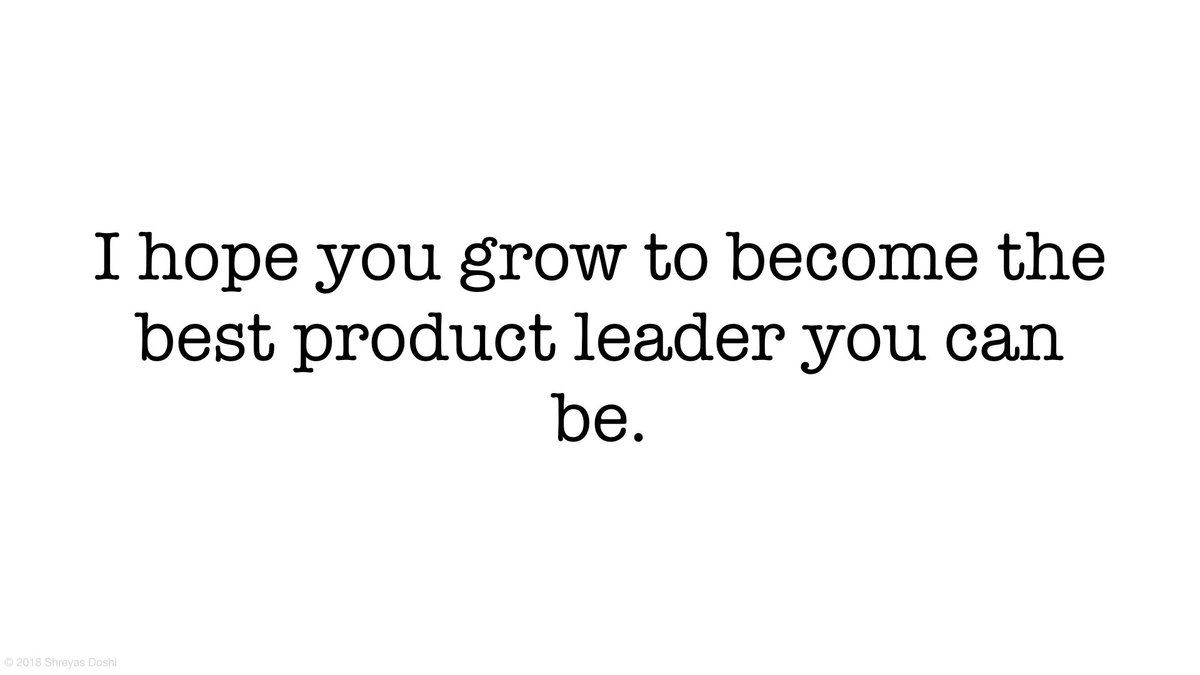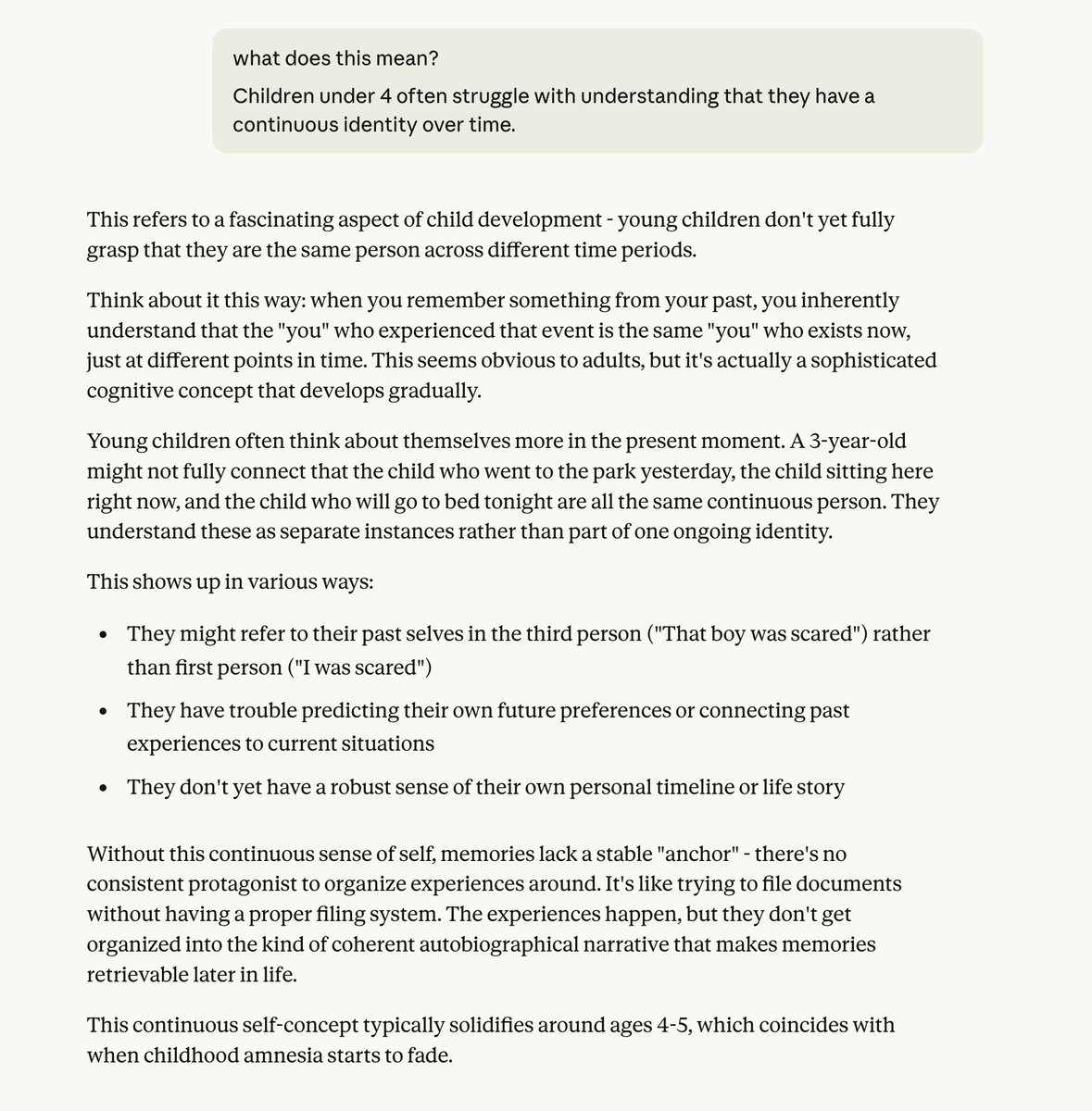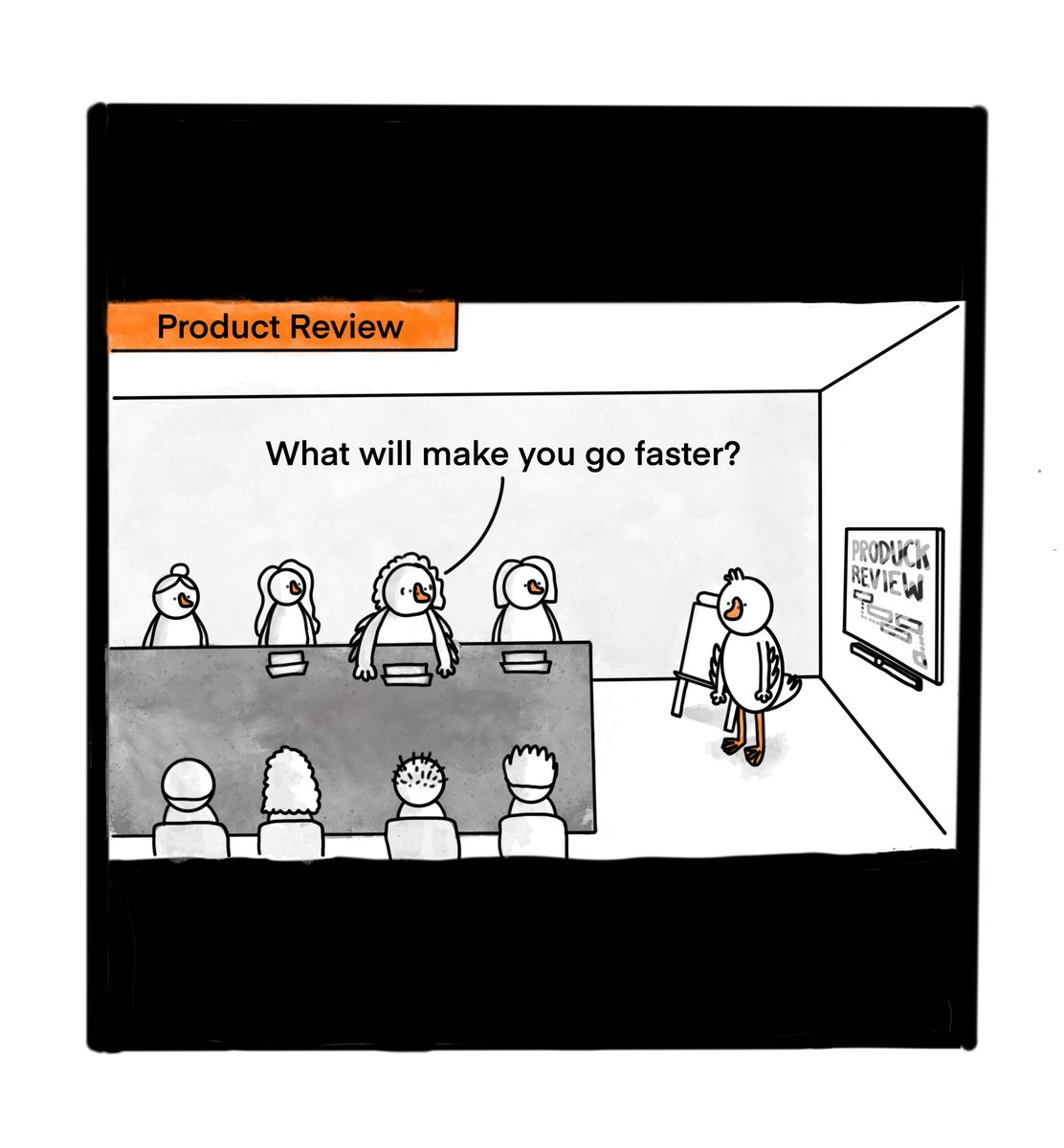More than 8 years after my last public talk on product management, I spoke about PM career management at Products That Count.
What follows is a long tweetstorm with the key content.
It isn't for the faint of heart.
Are you ready?

What follows is a long tweetstorm with the key content.
It isn't for the faint of heart.
Are you ready?
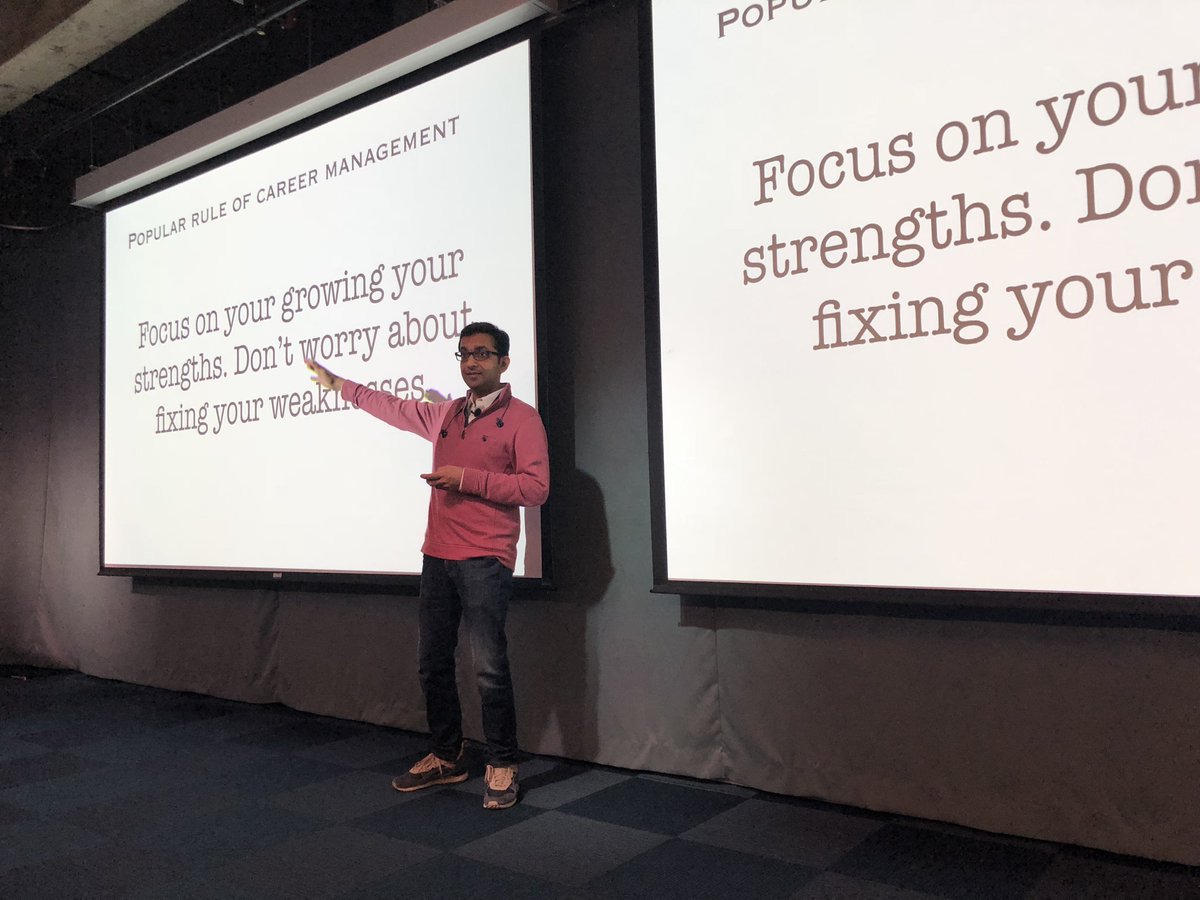

While most PMs make the transition to PM management once in their career, I’ve done it thrice over my 12+ year PM career: at Yahoo!, Google, and Stripe. This material draws upon my somewhat unique experience, particularly the mistakes I’ve made (and have seen others make). 
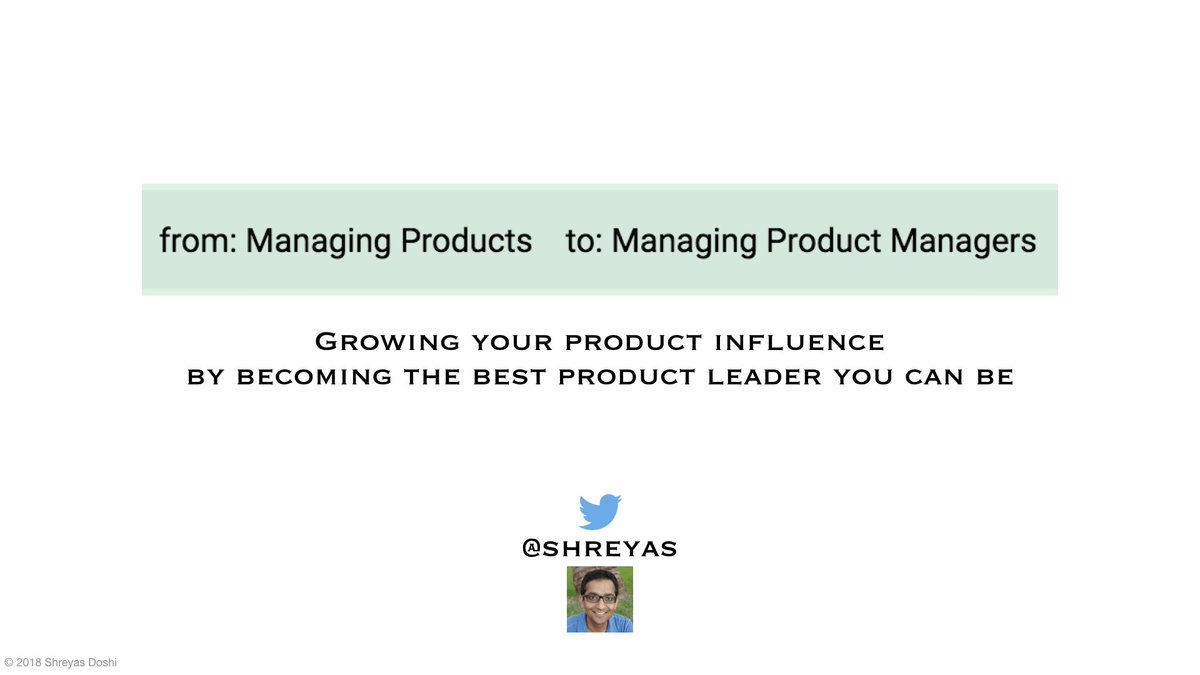
The question I get most often from Product Managers is:
“How can I get to manage Product Managers?”
“How can I get to manage Product Managers?”
To make progress in your PM career, you’ll have to ask a different question. Reframe the question to:
"How do I become an effective product leader?"
"How do I become an effective product leader?"
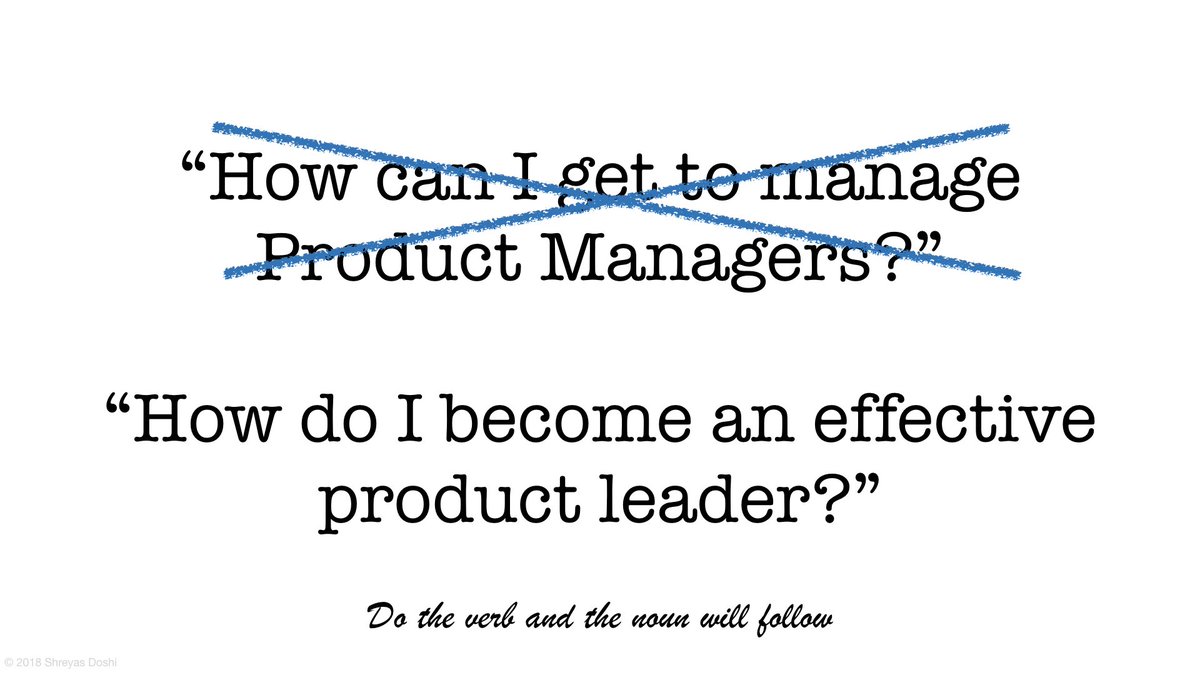
Instead of just looking at tactics, which you’ll find in various books, Tweets, and Medium posts, we will review the main principles and frameworks for growth as a PM. 
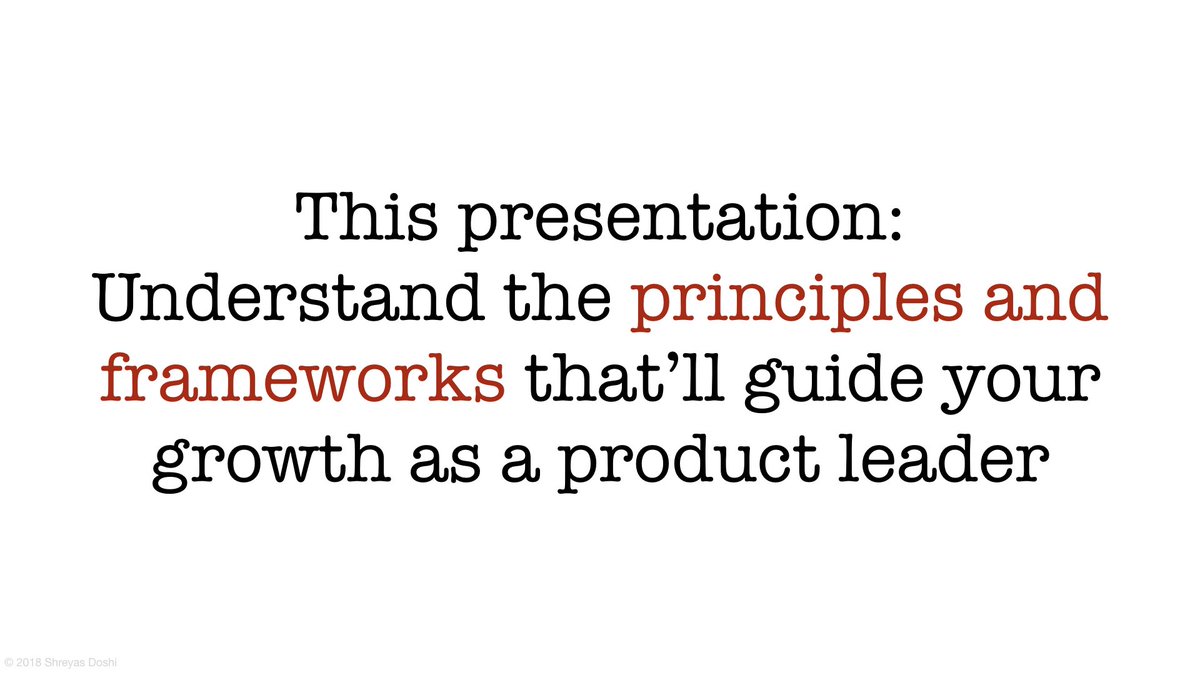
Observation:
Most PMs don’t understand what it takes to grow as a PM leader (and to get recognized for it)
Let’s solve that… right now
Most PMs don’t understand what it takes to grow as a PM leader (and to get recognized for it)
Let’s solve that… right now
You'll need to
1. Understand success drivers
2. Focus on the right priorities
3. Pick the right manager
1. Understand success drivers
2. Focus on the right priorities
3. Pick the right manager
Note that impact is about what’s happened in the past, competence is about who you are in the present, and potential is what you can do as a leader in the future. 
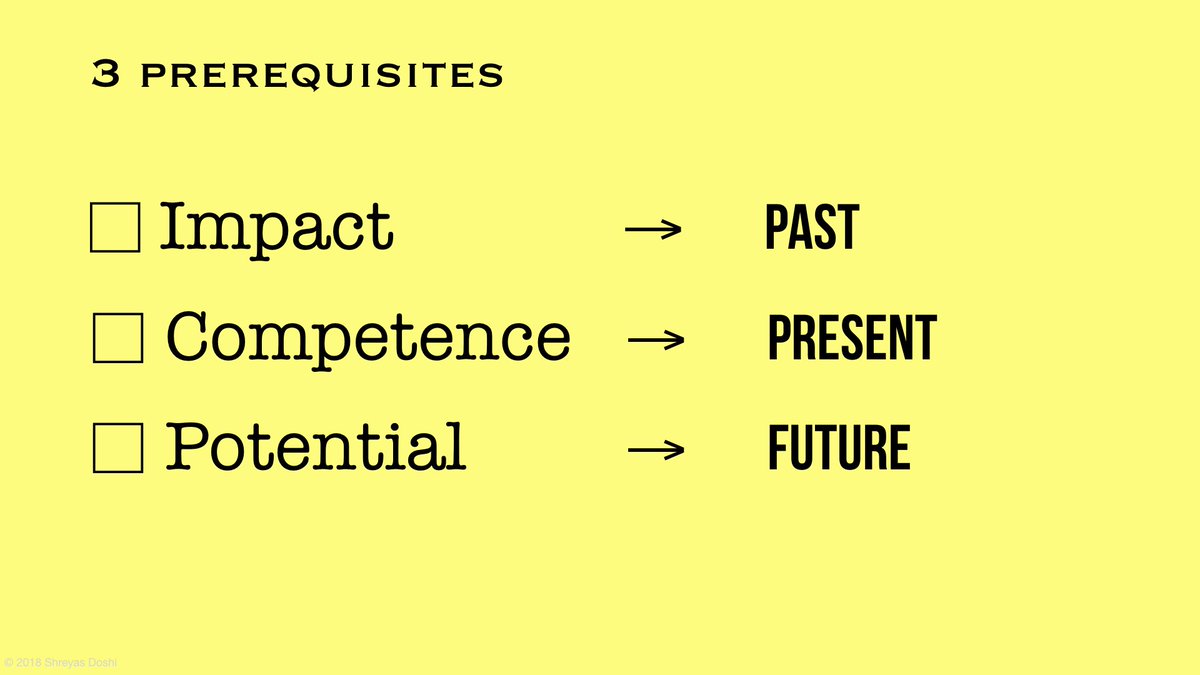
Now, let's look at situations that often confuse us as PMs.
The PM here doesn’t have THAT much experience, but they think that they’re ready to manage PMs. But this PM is missing something.
The PM here doesn’t have THAT much experience, but they think that they’re ready to manage PMs. But this PM is missing something.
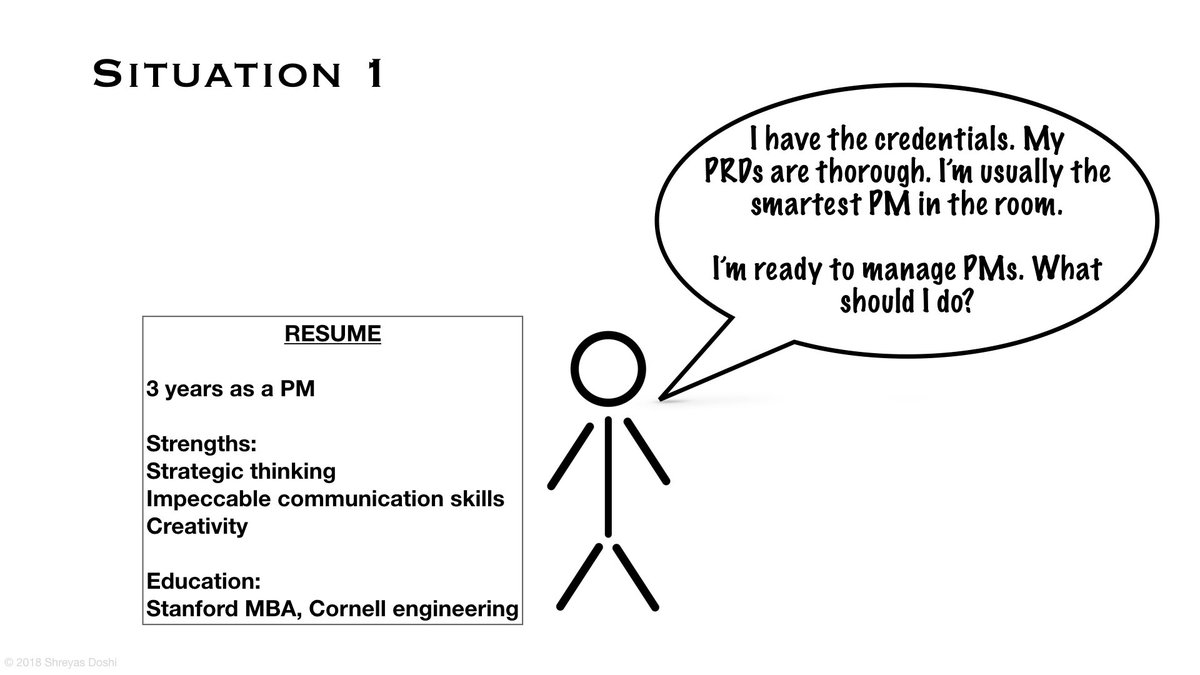
At most companies, you only become eligible to manage PMs once you reach a certain level of the PM ladder. I’ll now share a framework that’ll help you understand almost any company’s PM ladder.
There are a few different frameworks for this, but this one is the easiest to understand and the most generally applicable.
At any point in your PM career, you’re managing a certain amount of product scope and you have a specific degree of unique impact.
At any point in your PM career, you’re managing a certain amount of product scope and you have a specific degree of unique impact.
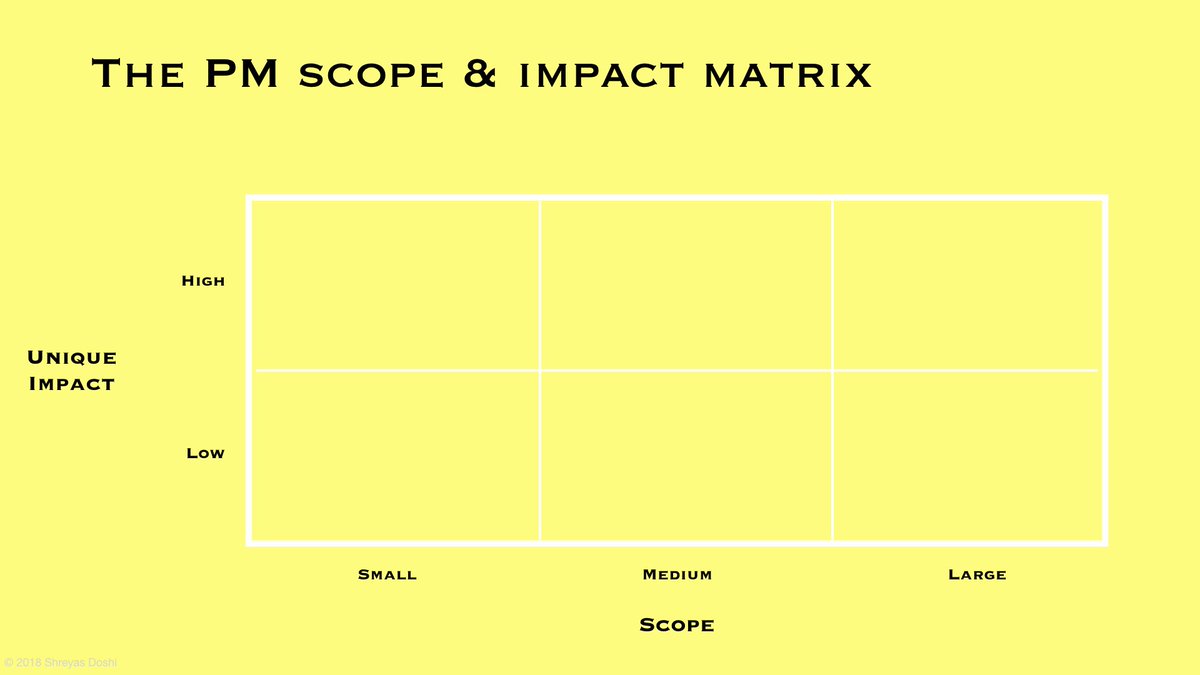
And what’s important to note is that you need to have reached a certain level—which is a proxy for your impact and the credibility you’ve established—and have a product scope that’s large-enough to justify being in PM management. 
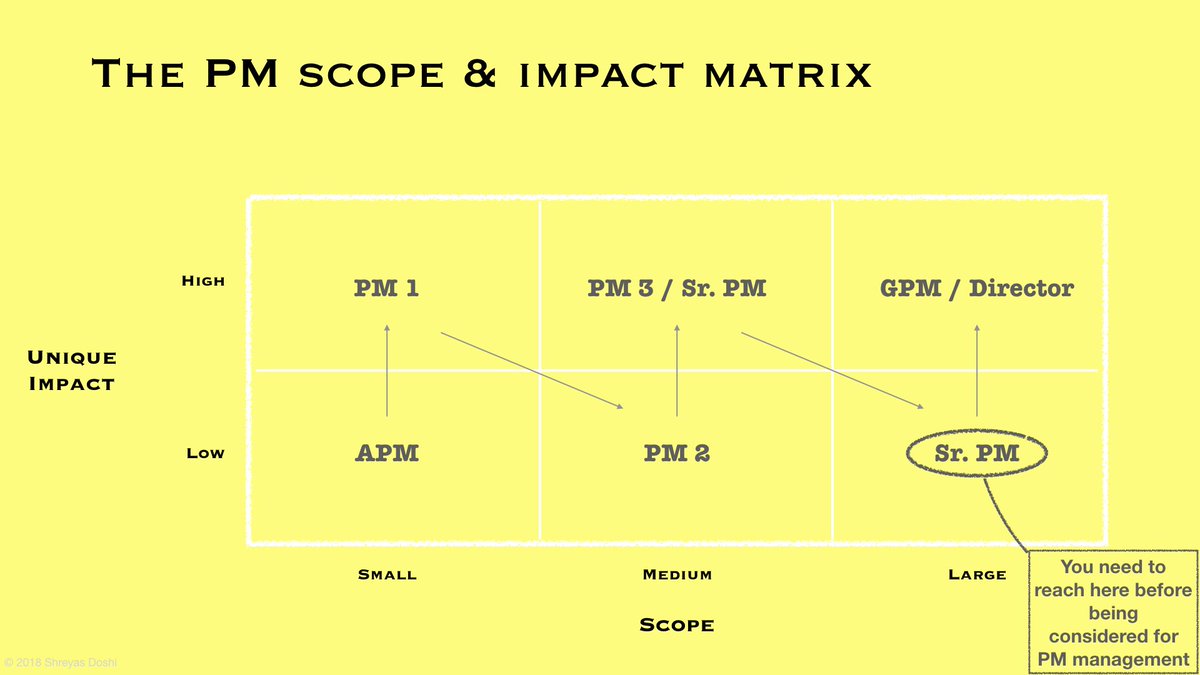
Another common situation:
Bob here feels like he’s checked all the boxes but hasn’t yet gotten the recognition he wants. He likes his company but begins to get resentful after 3 years there.
Alice, who on paper doesn’t have the same experience as Bob just became a PM manager.
Bob here feels like he’s checked all the boxes but hasn’t yet gotten the recognition he wants. He likes his company but begins to get resentful after 3 years there.
Alice, who on paper doesn’t have the same experience as Bob just became a PM manager.
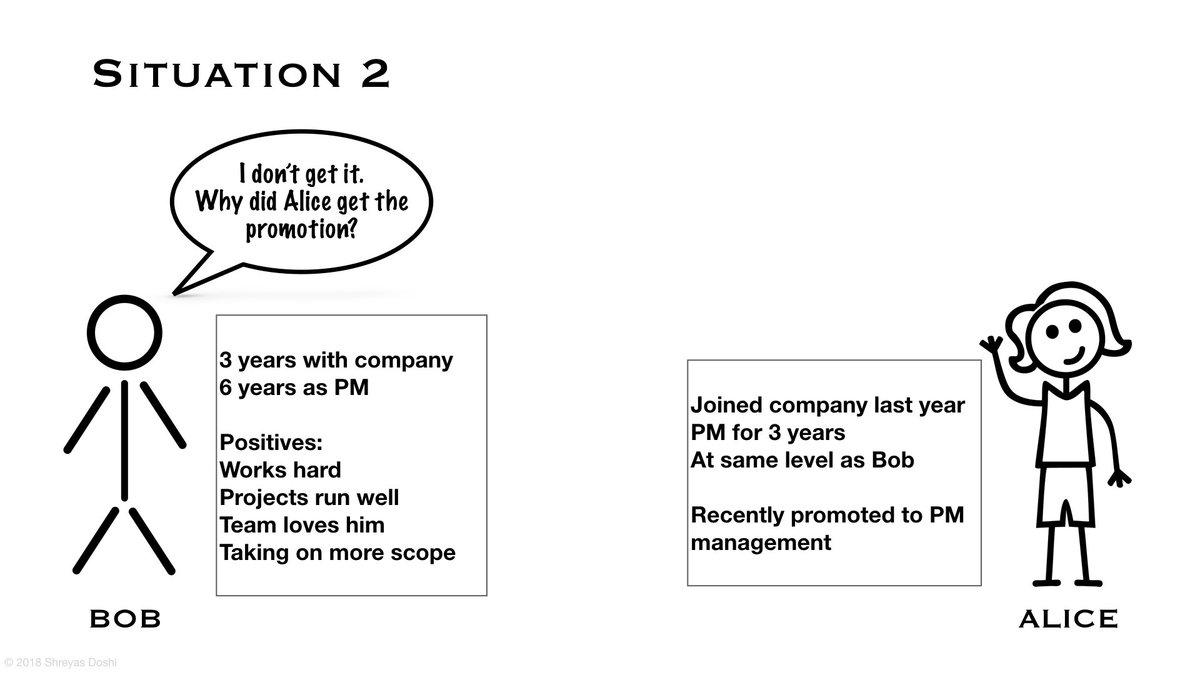
Data is an important aspect of Analytical sense, but recognize that it’s a part of the whole not the whole itself. 
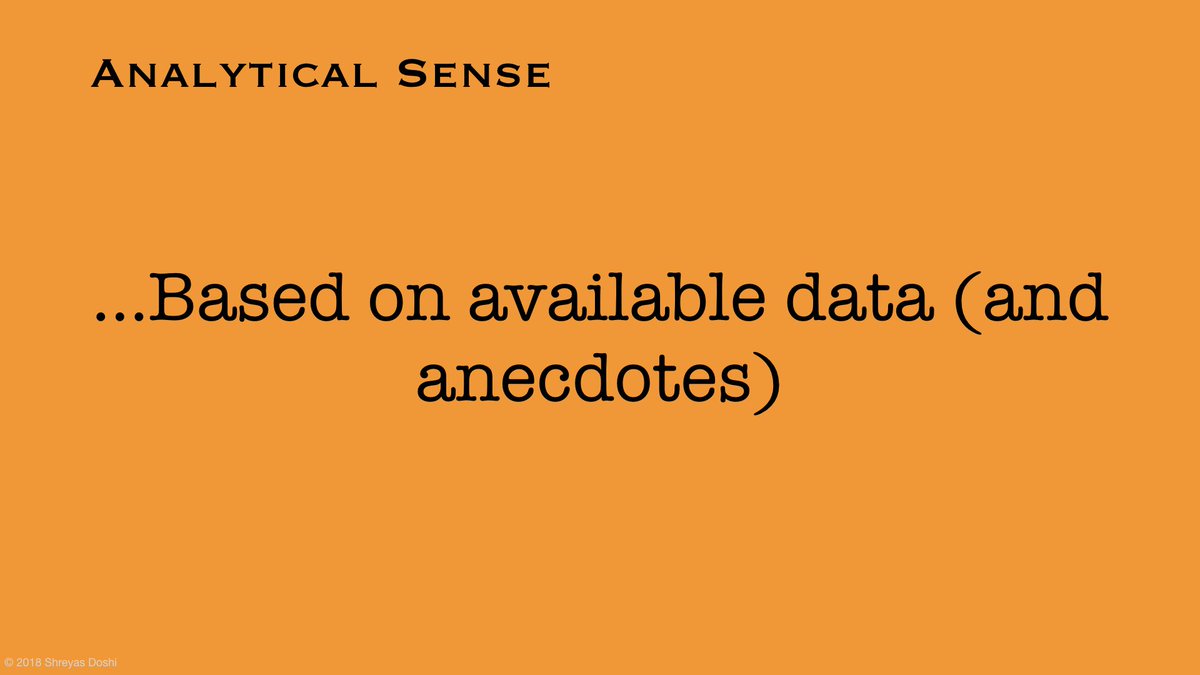
All too often, people think execution is all about being super-organized and disciplined. That’s important for good execution, but, for really great execution, you also need creativity, empathy, and persuasiveness. 
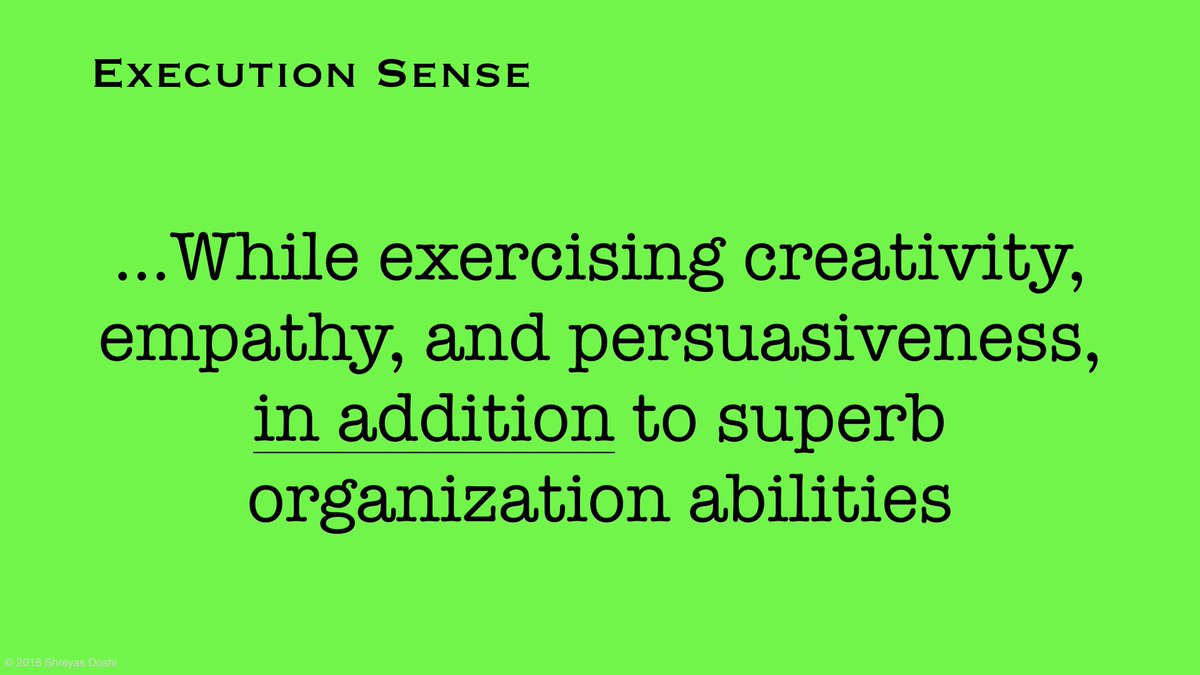
The actual order doesn’t matter much, as long as you’re top 10% in one of the senses, top 30% in another, and top 50% in the third 
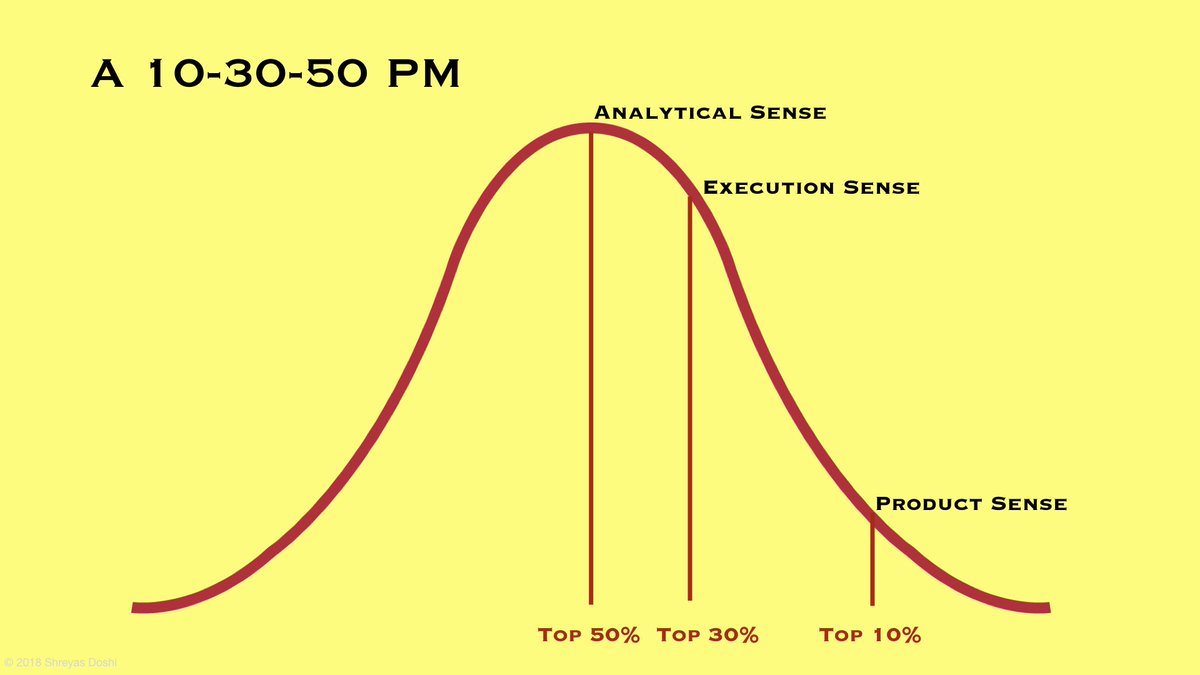
Becoming a 10-30-50 PM is the surest path to PM leadership.
And it will also place you in the top 10% compensation band across PMs of all levels—an advantage you can hold through the rest of your PM career.
And it will also place you in the top 10% compensation band across PMs of all levels—an advantage you can hold through the rest of your PM career.
Corollary: Once you are a 10-30-50 PM it’ll be very hard to stay in an IC role.
You will be *expected* to manage PMs in order to help create a high-performing PM team.
You will be *expected* to manage PMs in order to help create a high-performing PM team.
PMs need to be well-rounded. As a PM, you can seldom choose to just create amazing PRDs but not follow through on execution, or just use your instinct and never interpret data. 
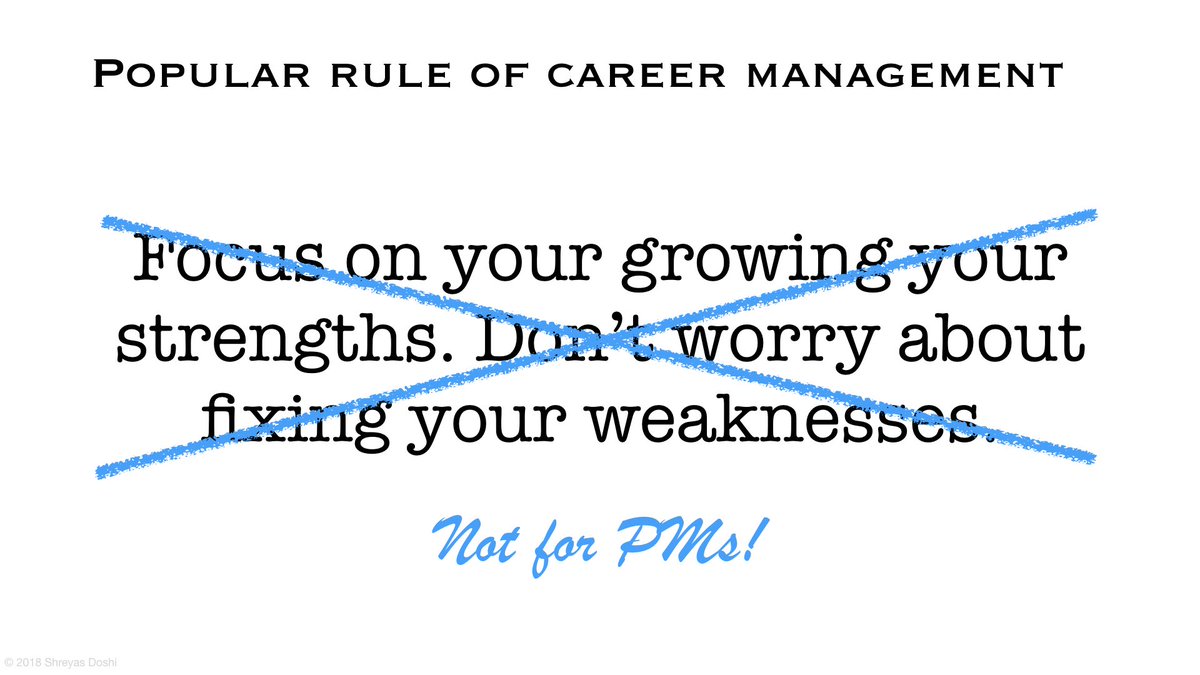
As an IC PM, you must identify and address your weaknesses. AND work on growing your strengths.
This is essential for checking the “Competence” box.
This is essential for checking the “Competence” box.
As a PM, you’ll have a “default sense”—that’s where you should strive to be within the top 10%.
And then, work towards improving the other 2 senses.
But how to do this?
And then, work towards improving the other 2 senses.
But how to do this?
The surefire way here is to pick your next project based on the sense you want to develop. I’ve done this a couple of times in my career—and while it has never been easy, it’s always been rewarding. 
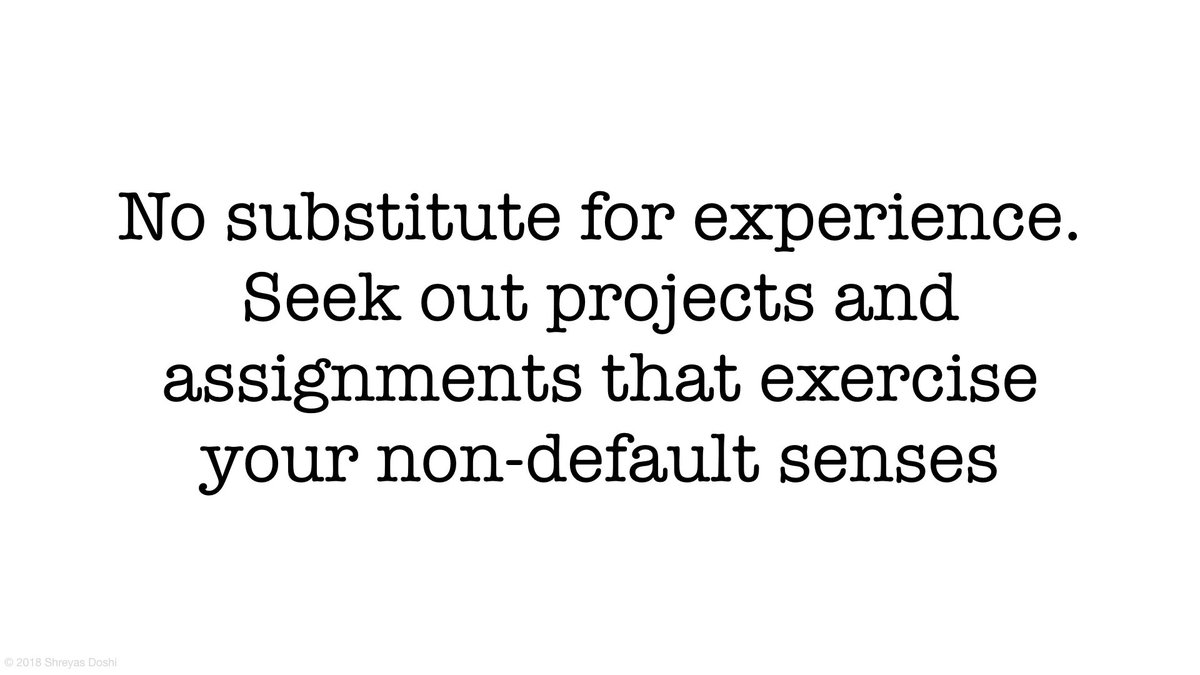
Now, let’s talk about "The Product Sense Advantage".
Product sense has always been an inscrutable PM skill. Let’s solve that now.
Product sense is comprised of 3 elements:
1. Empathy
2. Domain Knowledge
3. Creativity
Product sense has always been an inscrutable PM skill. Let’s solve that now.
Product sense is comprised of 3 elements:
1. Empathy
2. Domain Knowledge
3. Creativity
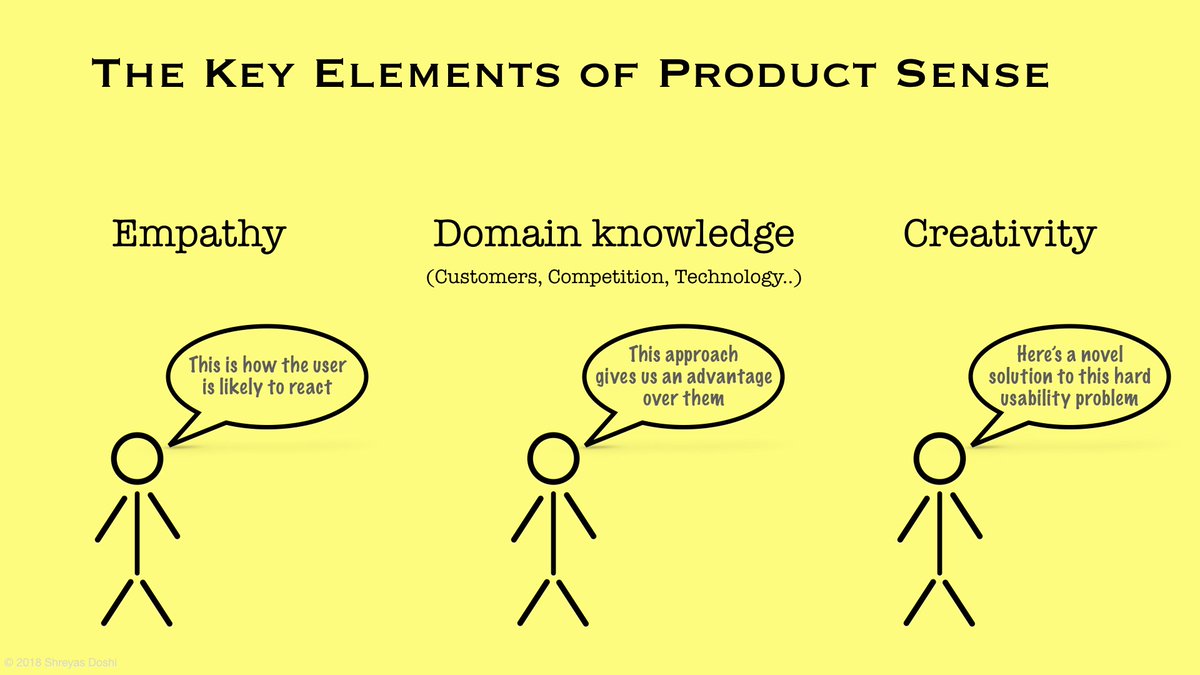
Deciding to invest in your Product sense is among the highest ROI decisions you’ll make in your career.
Even if, some day, you want to be CEO, you should know that most “product-focused CEOs” have Product sense as their unfair advantage.
Even if, some day, you want to be CEO, you should know that most “product-focused CEOs” have Product sense as their unfair advantage.
As an ambitious PM, you’re going to spend the majority of your time on projects that make an impact. But remember that your non-project time and where you decide to spend it as at least as critical as your “project time”. 
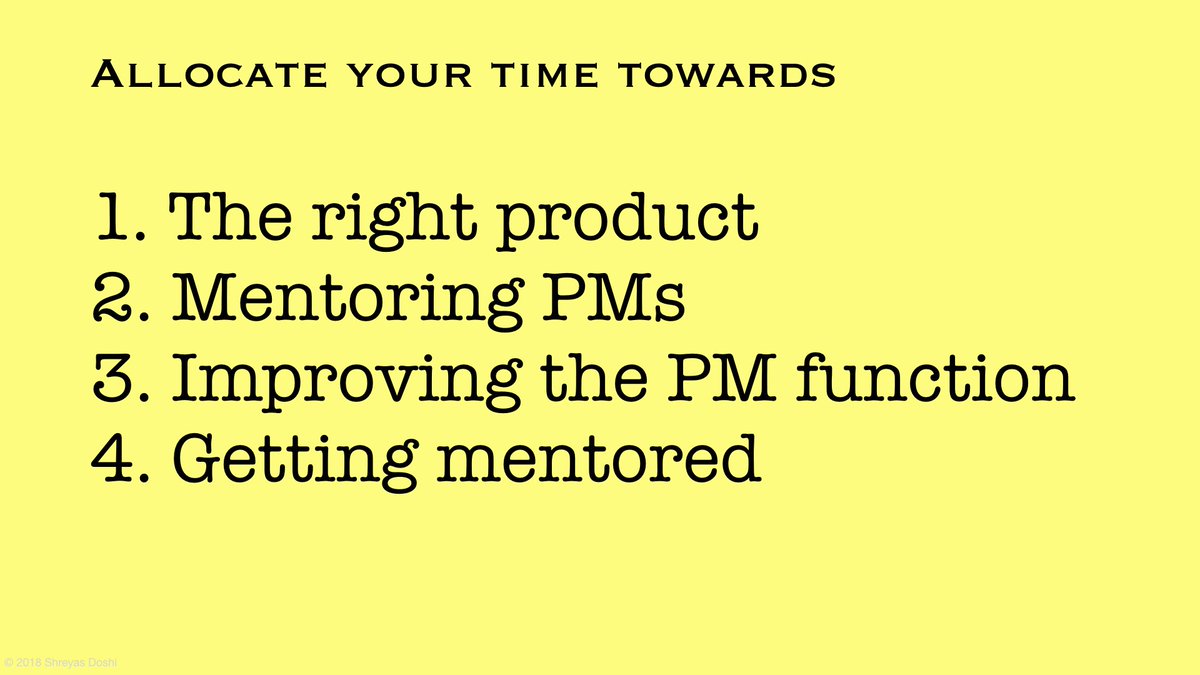
When it comes to picking a product to work on consider working on priority products, especially earlier on in your career. 
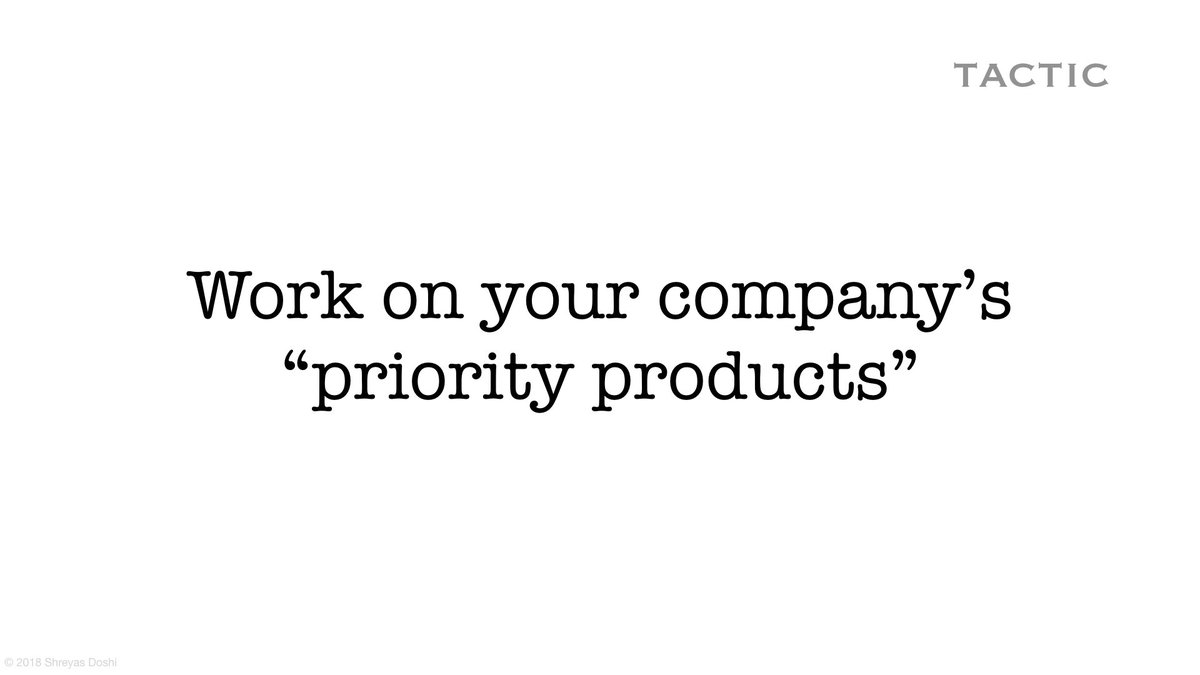
Corollary: You can seldom go wrong by working on the company’s core business.
Core = has achieved product-market fit, is (ideally) growing like bonkers, contributes significantly to the company’s top 3 metrics.
This is typically a reliable way to check the “Impact” box.
Core = has achieved product-market fit, is (ideally) growing like bonkers, contributes significantly to the company’s top 3 metrics.
This is typically a reliable way to check the “Impact” box.
PMs typically run away from hard projects that create outsized opportunity or mitigate an existential risk for the company. And it says a lot about your maturity and character as a PM if you run towards such projects. 
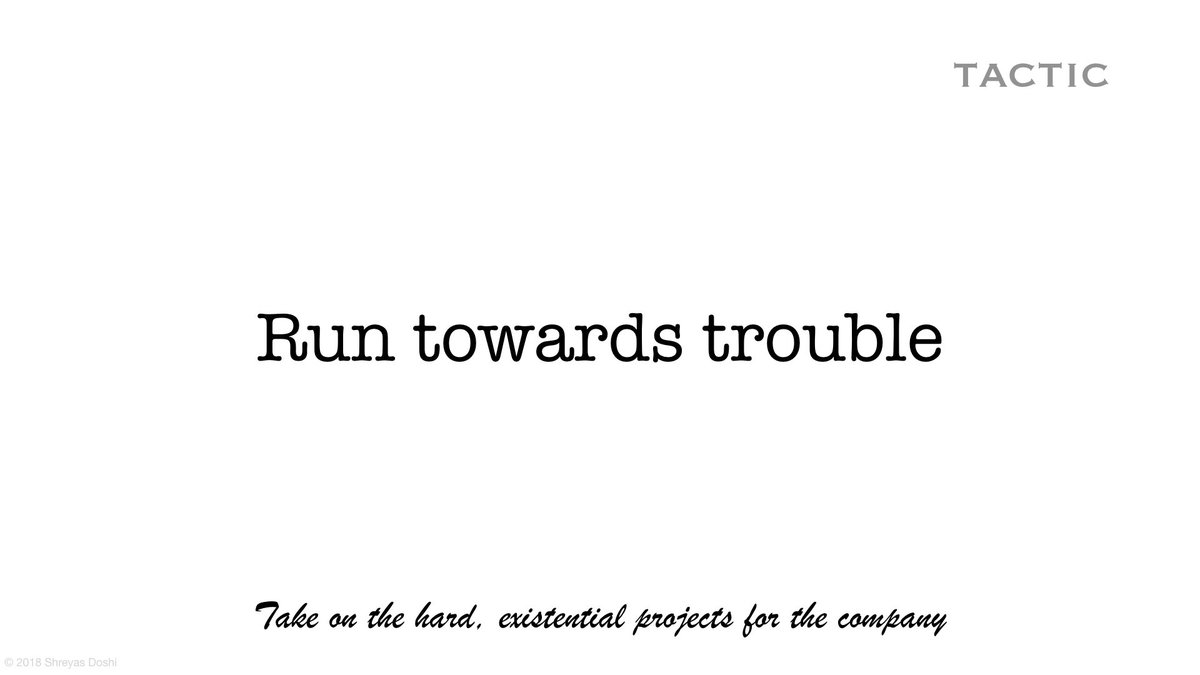
Stop asking “whom can I manage?”
Ask “whom can I mentor?”
Being an effective PM mentor is a prerequisite for being considered for PM management.
This helps you check the “Potential” box as a leader.
Get your mentees to write a review during your performance cycle.
Ask “whom can I mentor?”
Being an effective PM mentor is a prerequisite for being considered for PM management.
This helps you check the “Potential” box as a leader.
Get your mentees to write a review during your performance cycle.
A horizontal is an initiative or a problem—outside of core products and projects—that affects your broader org or your company. Some examples: your recruiting process, quarterly prioritization process, PM training. 
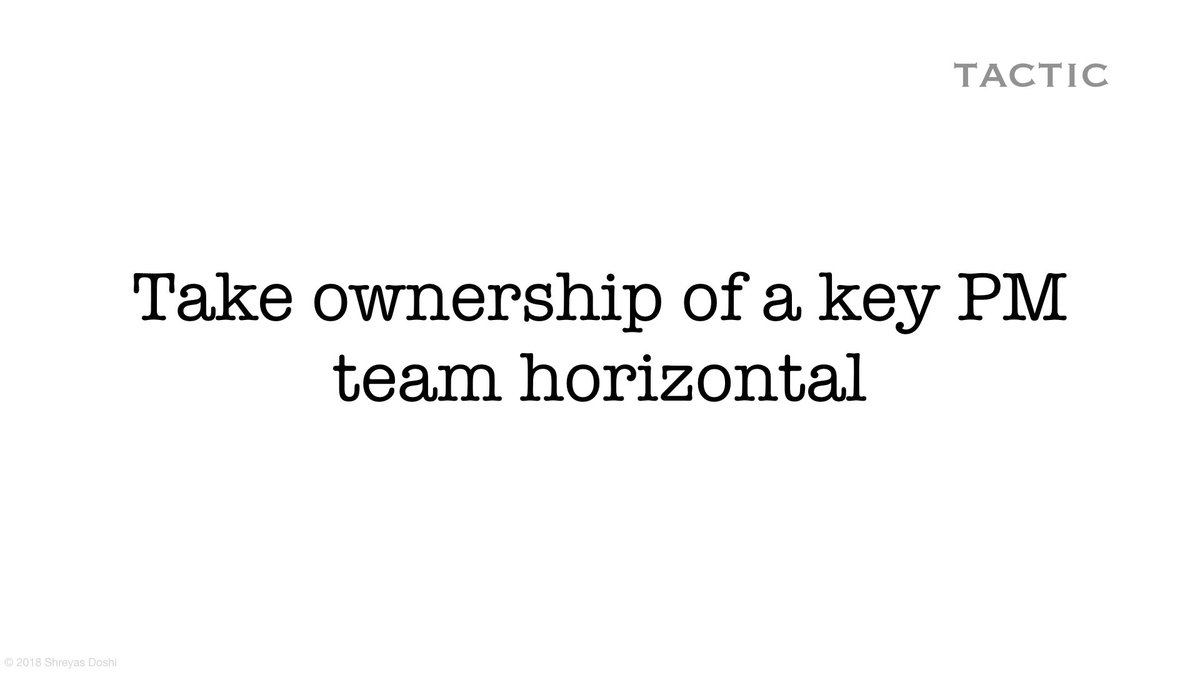
Don’t have horizontals at your company?
Creating horizontals is a horizontal.
Creating horizontals is a horizontal.
You can’t be the best at everything, but you can always be the best at getting people’s help.
By getting mentored by your manager’s peers, you will not only get a broader perspective, but you will also build allies who’ll advocate for you when you need it. 
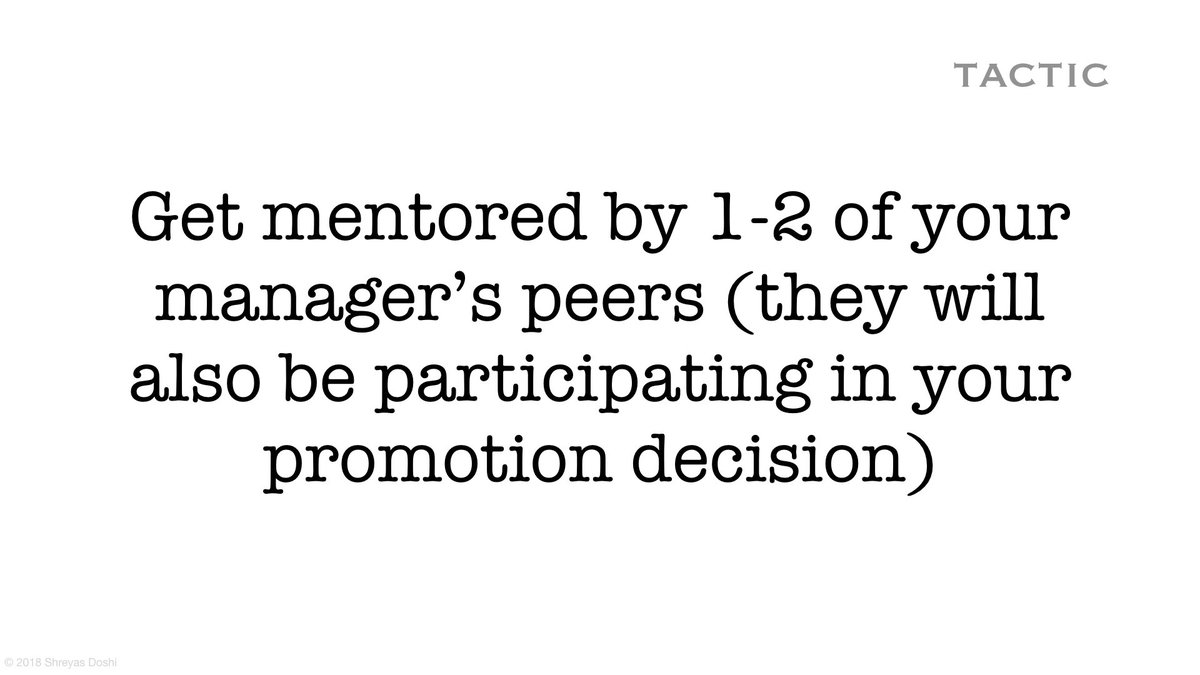
One of my managers at Google once gave me this valuable advice: treat the performance cycle during which you’ll come up for promotion as a milestone, just like you would for any product/project milestone. 
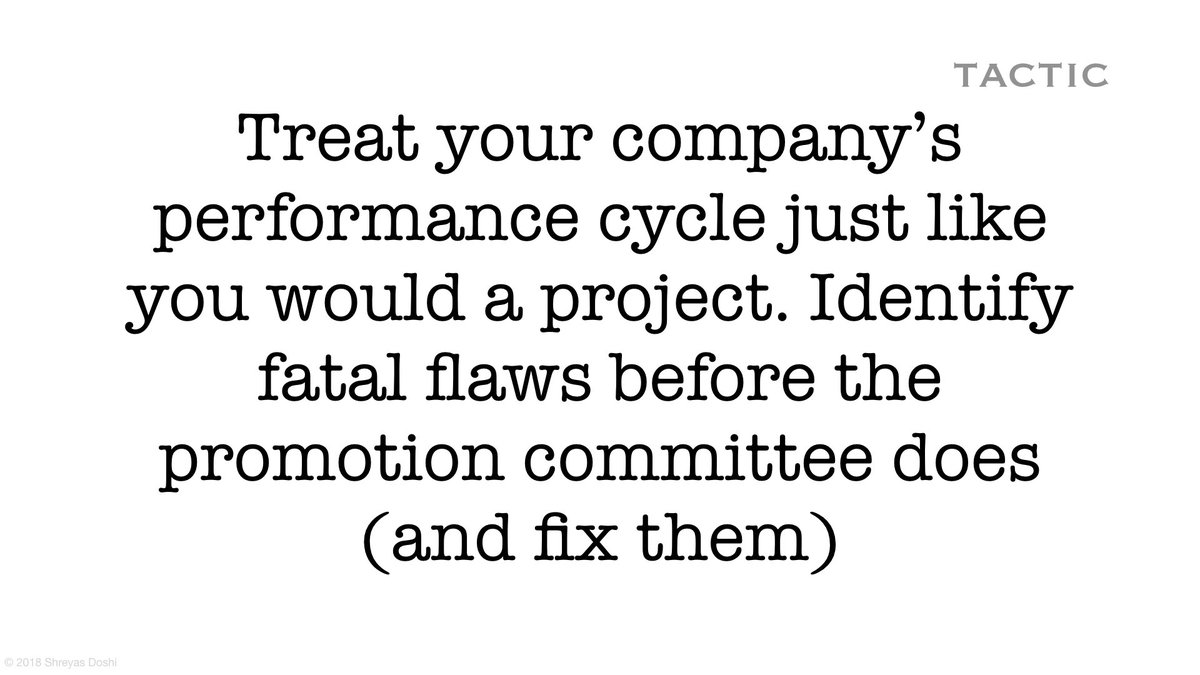
Moving on, this doesn’t get talked about enough.
Your manager is your advocate, your main mentor. The choice of a manager can be career defining, but no one ever teaches us what to look for in a manager.
Your manager is your advocate, your main mentor. The choice of a manager can be career defining, but no one ever teaches us what to look for in a manager.
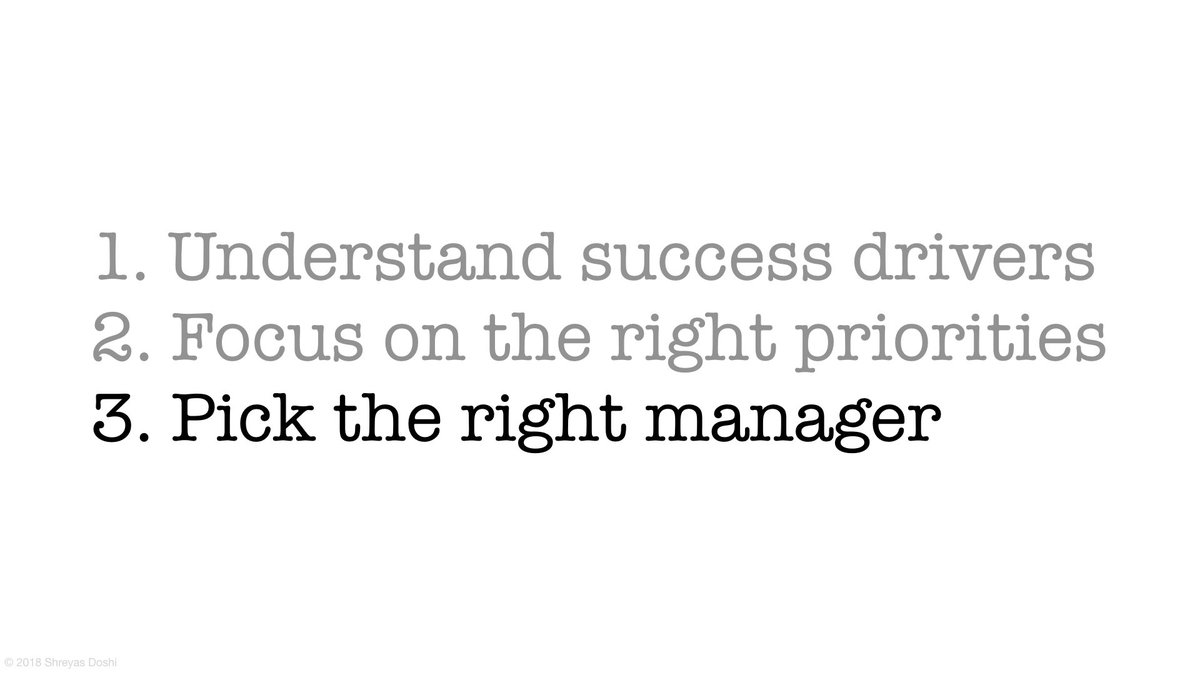
Pick a manager who is credible, has empathy for your job, will invest the time necessary to help you grow, and is secure so that they can be objective about your career growth and a real partner for you. 
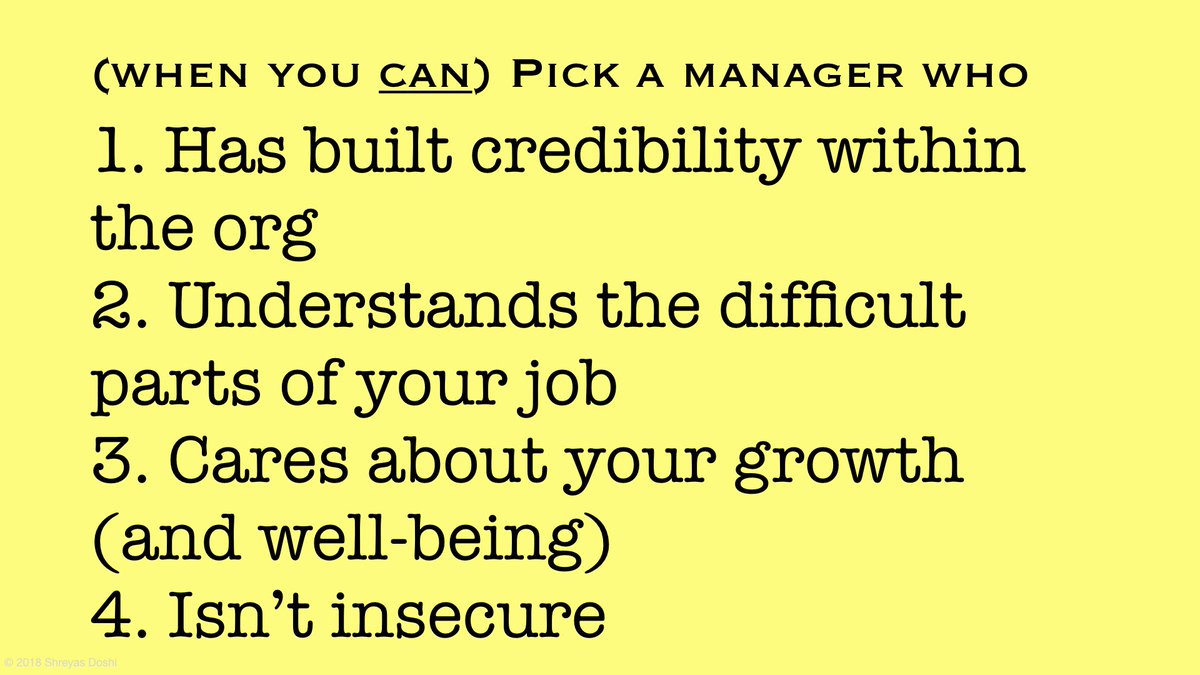
Get your manager to help create a career roadmap. Making it a joint work product will make him / her feel more accountability. There’s more to say here, but we need to move on for now. 

I love these lines from Hamilton the musical. Being a good PM manager is really hard. Let’s see what we need to do now. 
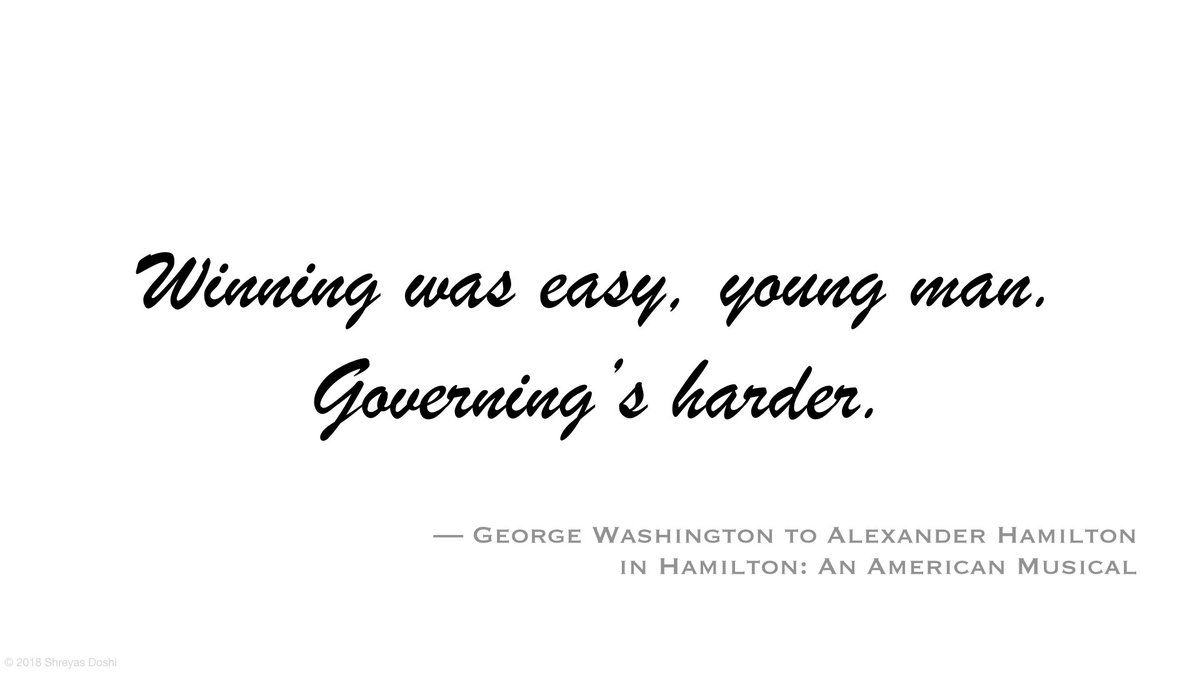
The question I get most often from PM Managers:
“How can I become a VP Product?”
“How can I become a VP Product?”
While this a vast topic by itself (and perhaps for a future tweetstorm :) ), I’ll leave you with a few principles and frameworks I’ve found useful.
Observation:
Most PM Managers take several years to understand their core job
(and *their* managers might not understand it either)
So let's first solve that.
Most PM Managers take several years to understand their core job
(and *their* managers might not understand it either)
So let's first solve that.
You’ll perhaps be spending 10-15% of your time on Product Strategy. It isn’t the most time-intensive part of the job, but it’s always the first part to go when things get busy. So watch out for the tendency. 
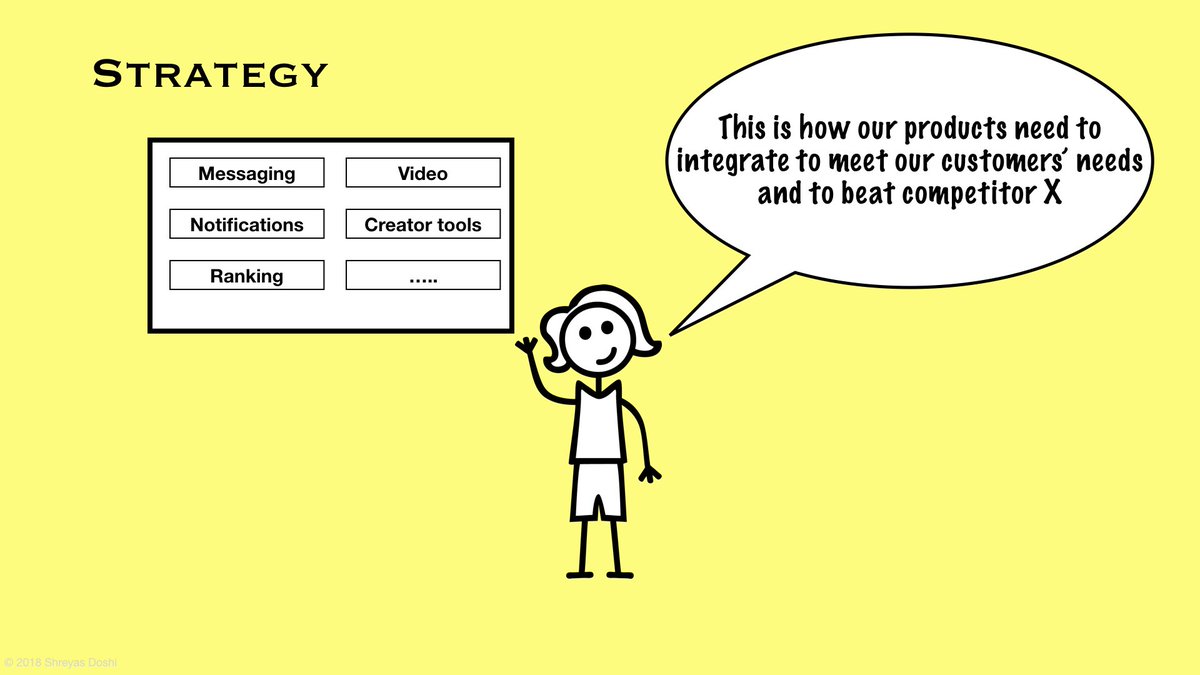
Coaching is how you make your organization and your company better. A key tip here is to understand how each individual wants to be coached and adjust your style accordingly. 
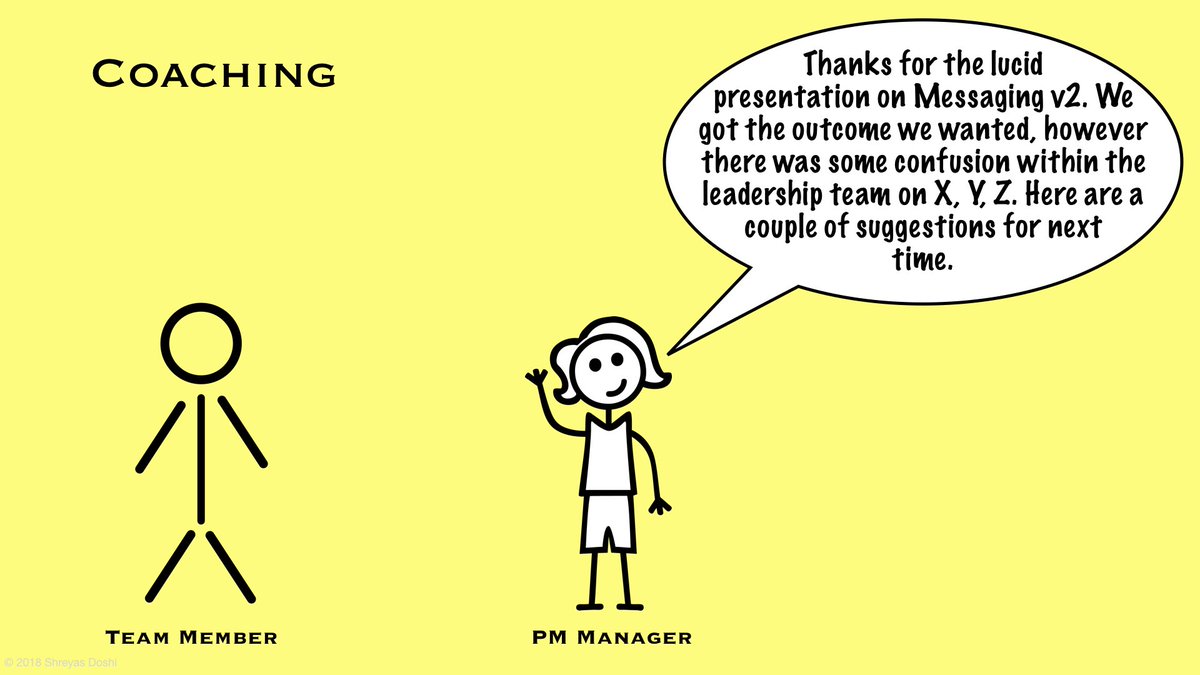
Switching from Creating to Editing is the hardest change for new PM Managers.
And until you figure this out, your PMs are going to be frustrated.
Let's solve this.
And until you figure this out, your PMs are going to be frustrated.
Let's solve this.
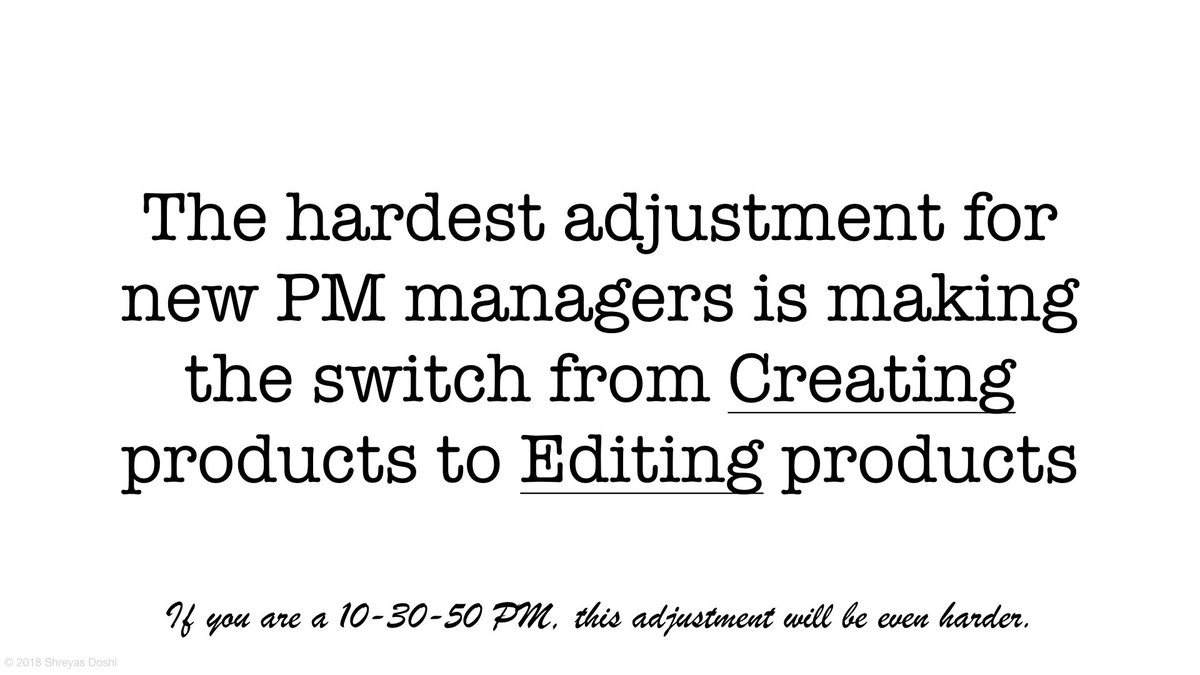
Here's a framework for effective editing.
The first and the last step are usually the hardest.
While there's a lot of material out there on listening well, there isn't much on how you decide whether to "direct a decision" or "delegate a decision".
The first and the last step are usually the hardest.
While there's a lot of material out there on listening well, there isn't much on how you decide whether to "direct a decision" or "delegate a decision".
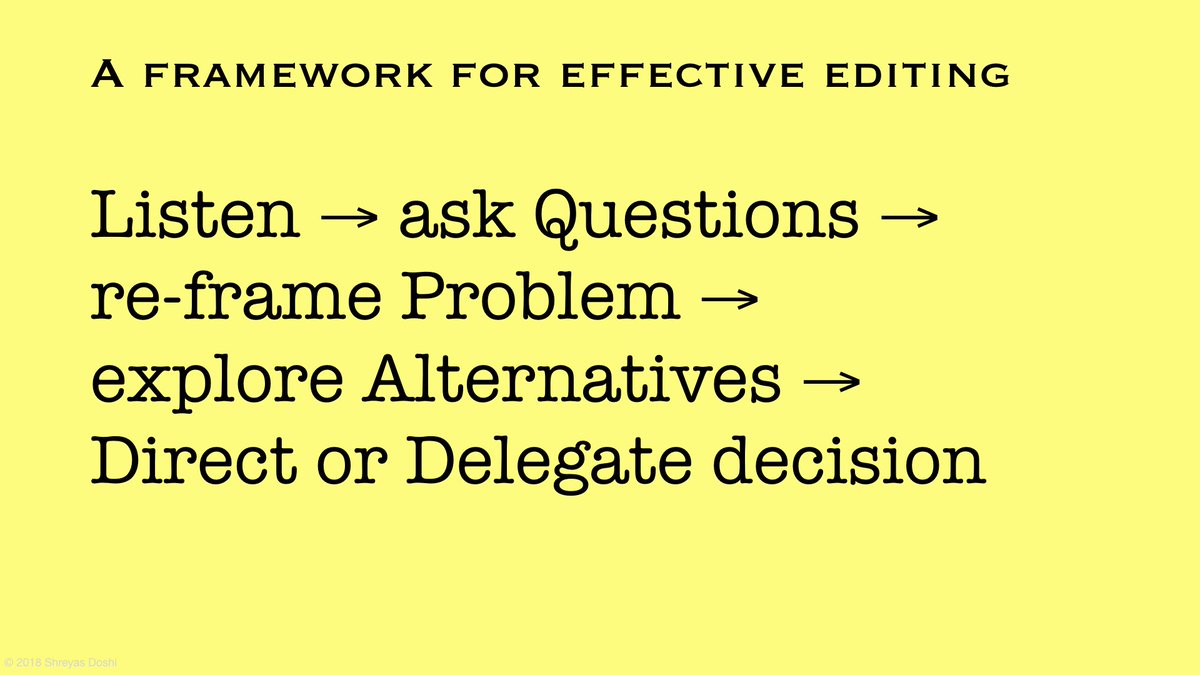
It’s important to establish clarity on the decisions your team members can make on their own and the decisions you’d like to make with them.
This 3x2, which I’ve adapted from a framework by @rabois, is something I draw for my direct reports early on in the relationship.
Along the X-axis is their own confidence level on a decision and on the Y-axis is the impact to the business (positive or negative) of that decision.
Along the X-axis is their own confidence level on a decision and on the Y-axis is the impact to the business (positive or negative) of that decision.
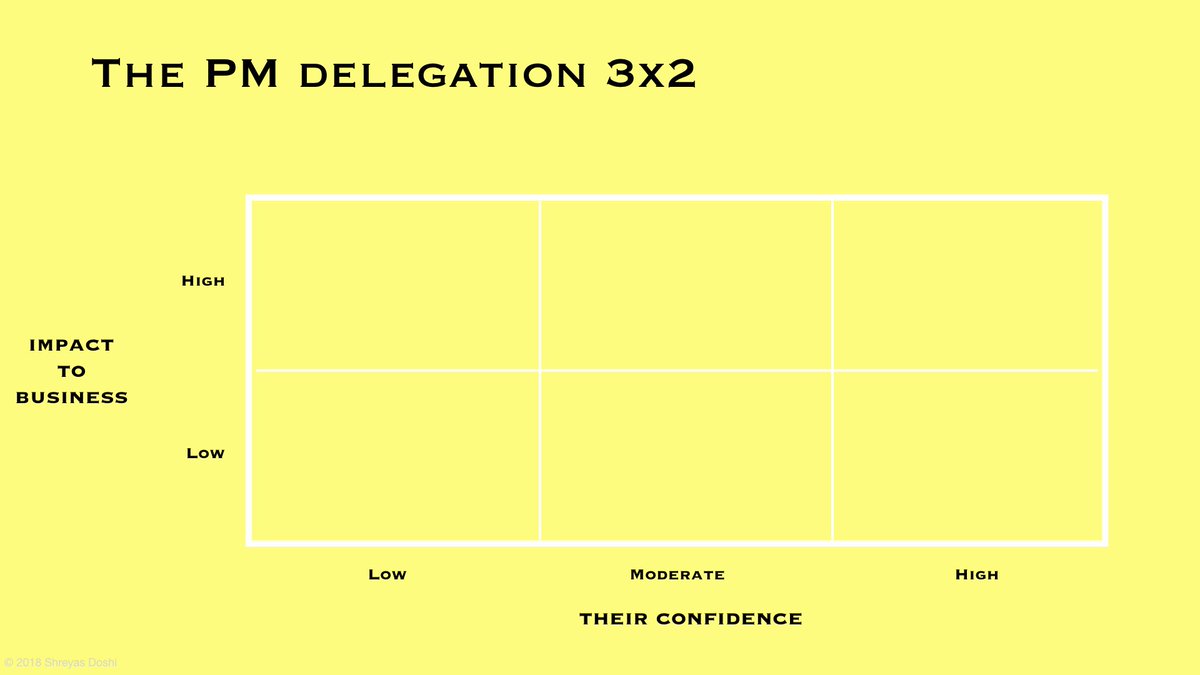
As a pro-tip, with PMs, it usually helps to have a medium/moderate confidence level (as otherwise everything ends up in the high confidence bucket :) )
With a more junior PM, I’ll point out that they need not check in with me for decisions in boxes 1 and 2. Simultaneously, if they _want_ my advice, I’m available. And I expect them to make sure to check in with me for decisions in boxes 3, 4, 5, and 6.
I’m also clear with them that one way to measure their growth is how quickly we can start expanding to the higher numbered boxes. With a more senior PM, I’ll start with box 3 and 4, and work upwards from there.
Finally, box 6 is where you need to be spending the bulk of your time. For complex projects, your team members will often be in box 6. 
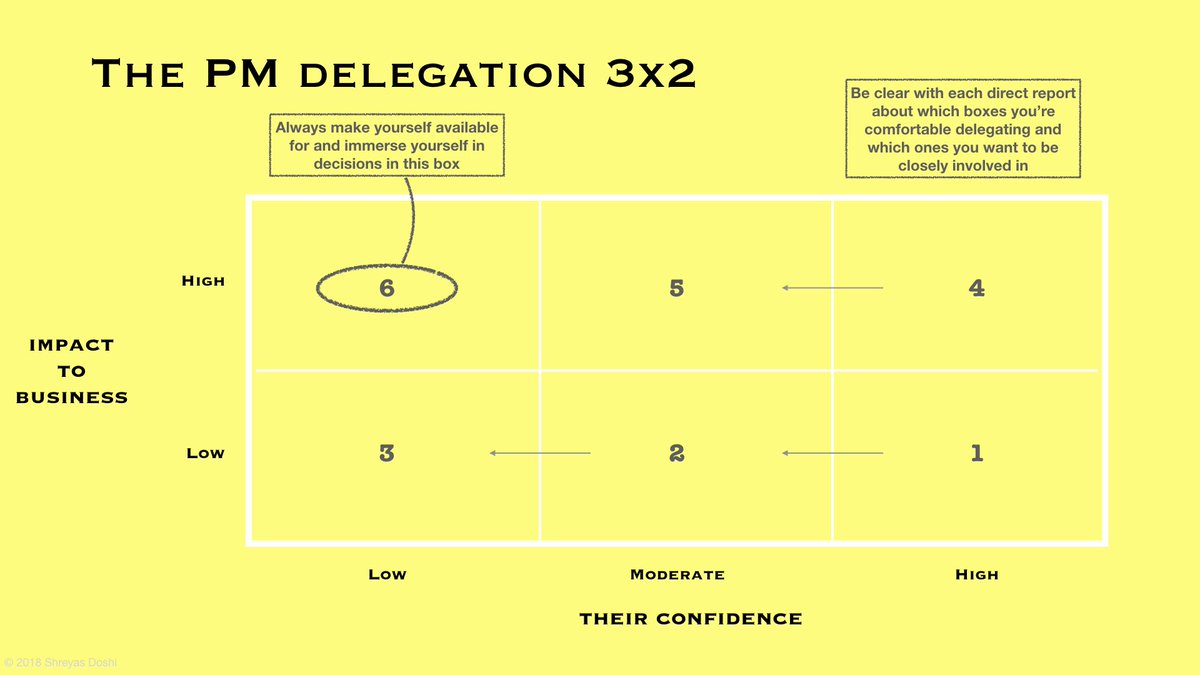
Last thing here, keep in mind whether a decision is reversible. You want to be more flexible for reversible decisions and less so for irreversible ones.
Now, let's move on to time management.
Especially as a new manager, you’ll still have a significant chunk of “IC projects". The topic of time management could fill up a whole talk by itself, but I’ll leave you with one framework I’ve found useful.
Especially as a new manager, you’ll still have a significant chunk of “IC projects". The topic of time management could fill up a whole talk by itself, but I’ll leave you with one framework I’ve found useful.
As individuals, there are about 3 things that we should do flawlessly on any given day, week, month, year. We should be OK with flaws in the remaining things. By choosing those 3 things wisely, we can cover the bulk of what it takes to be really successful. 
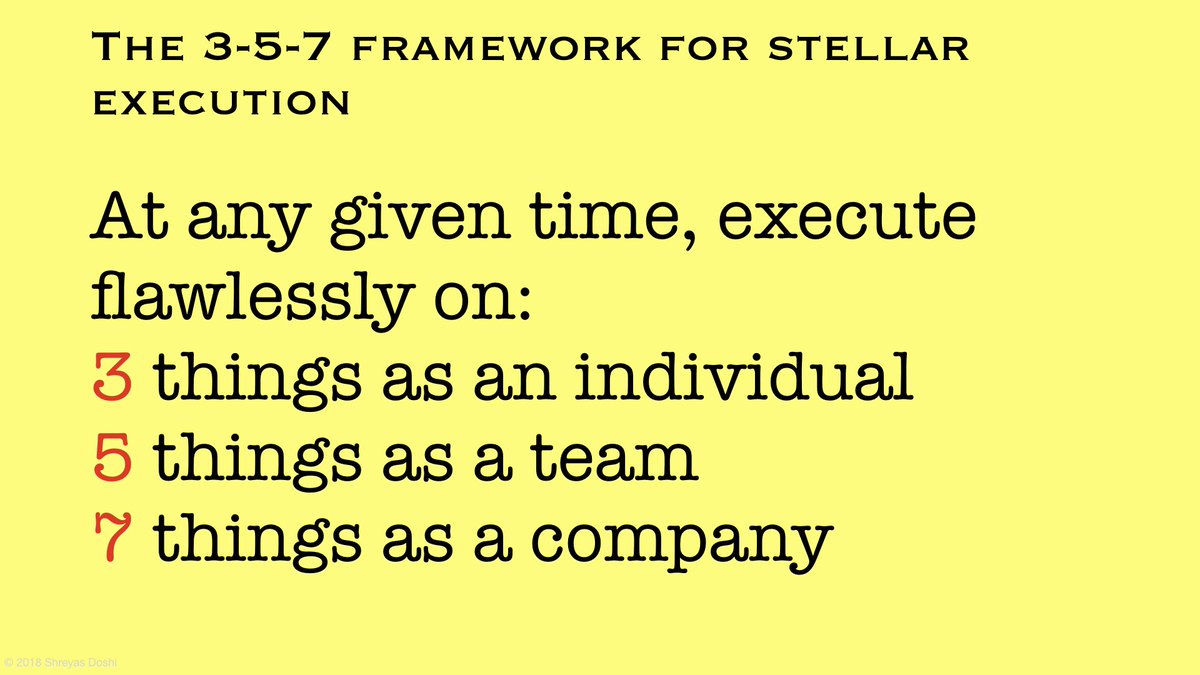
For teams, that number is about 5 things. And for companies, about 7 things.
EOF
• • •
Missing some Tweet in this thread? You can try to
force a refresh

